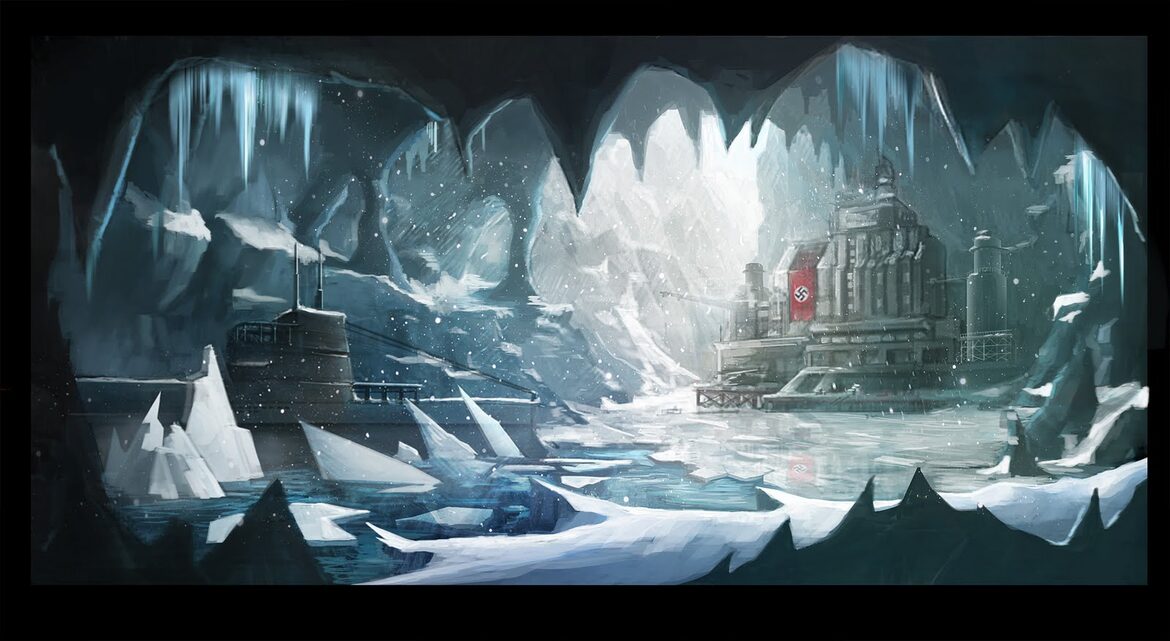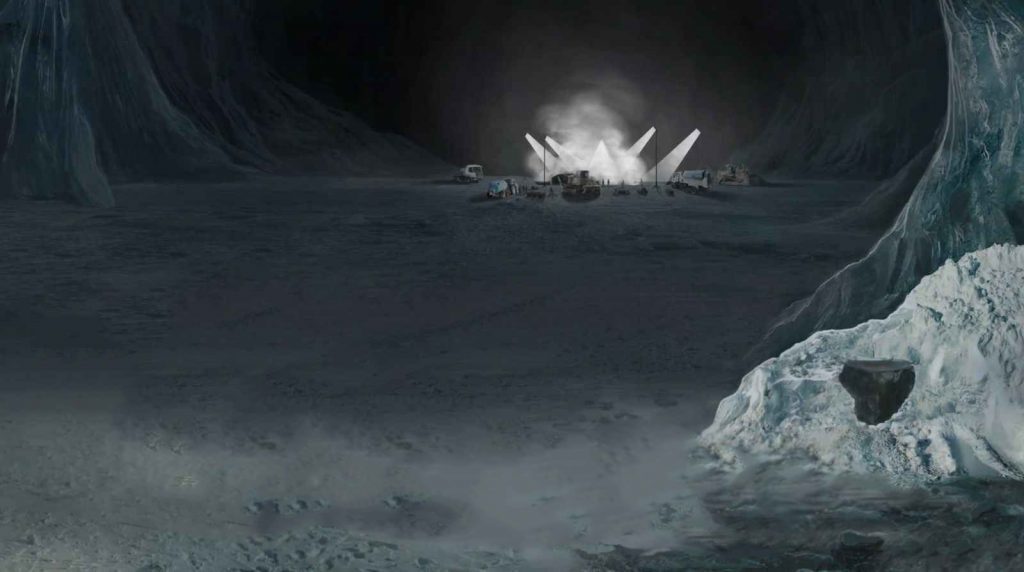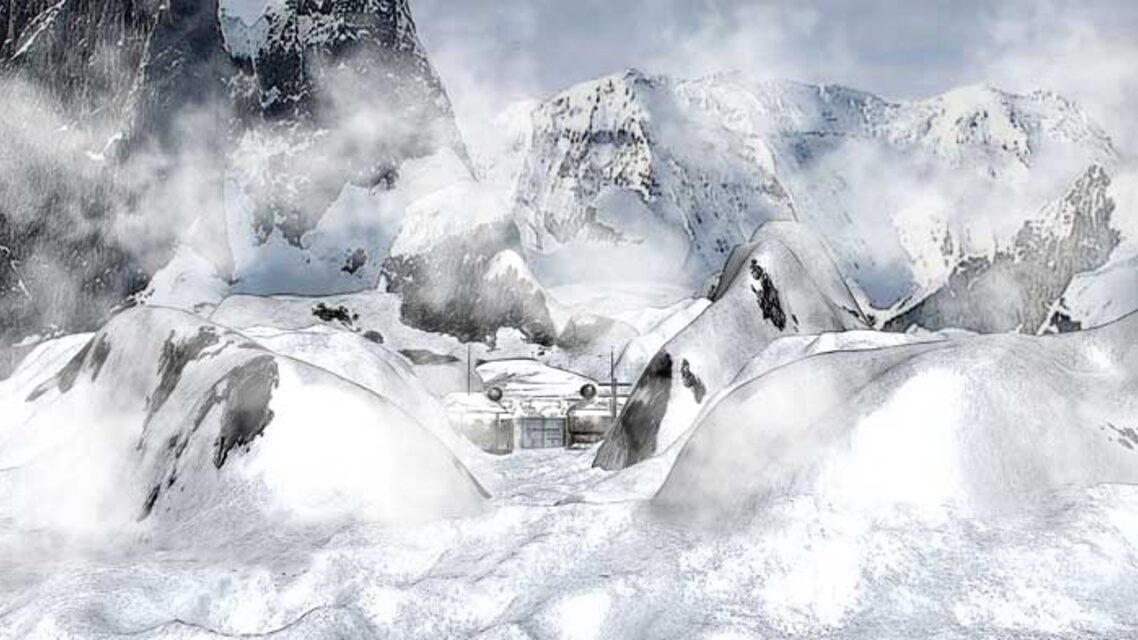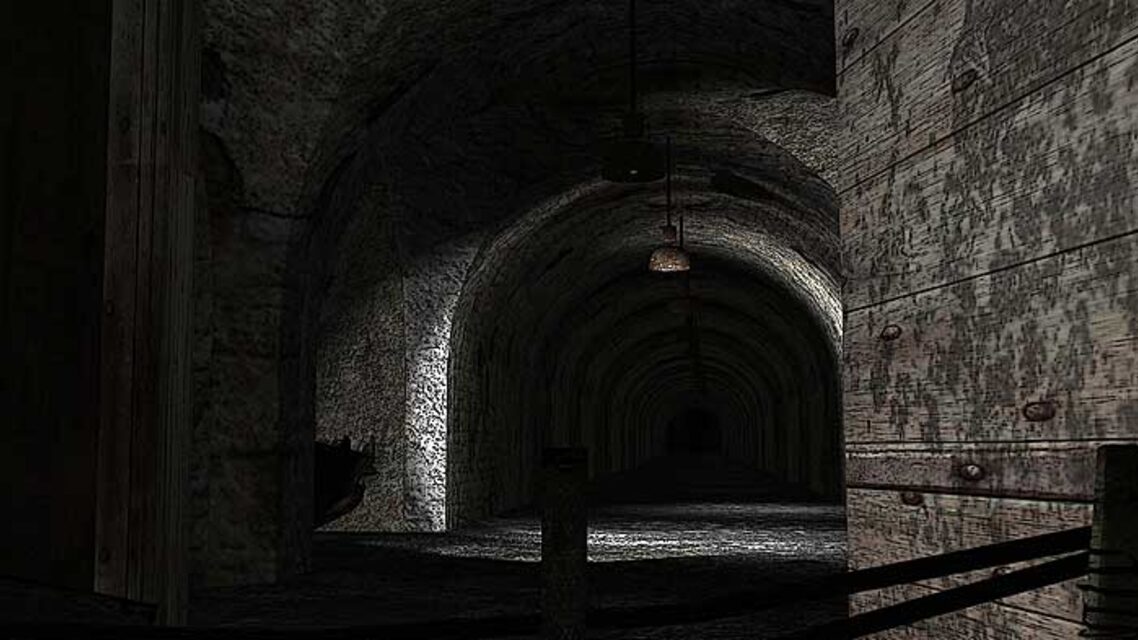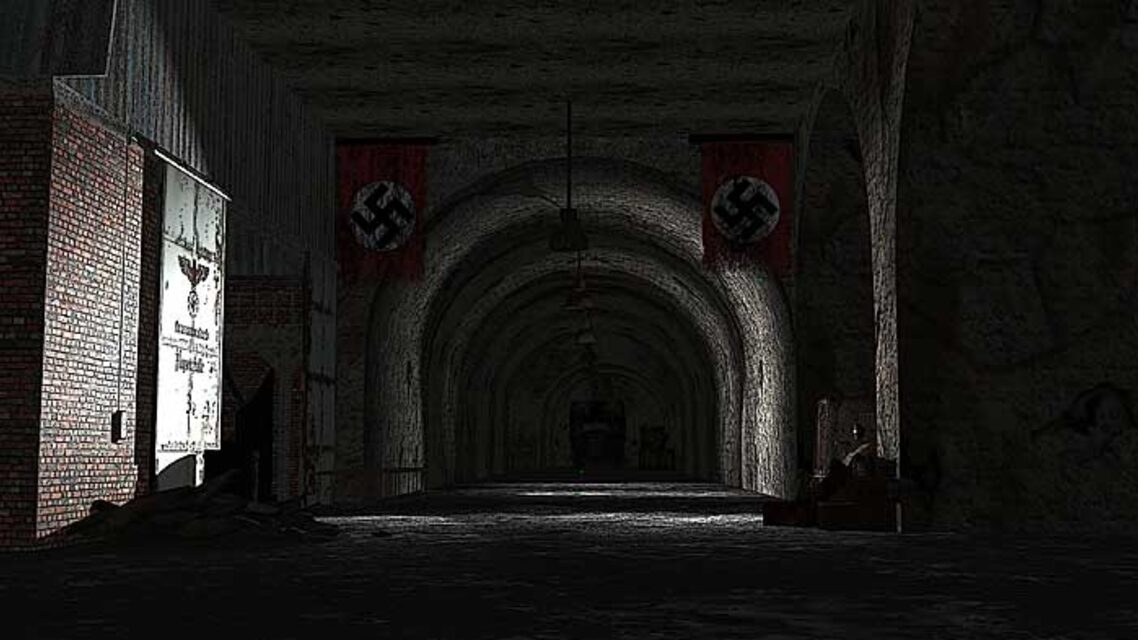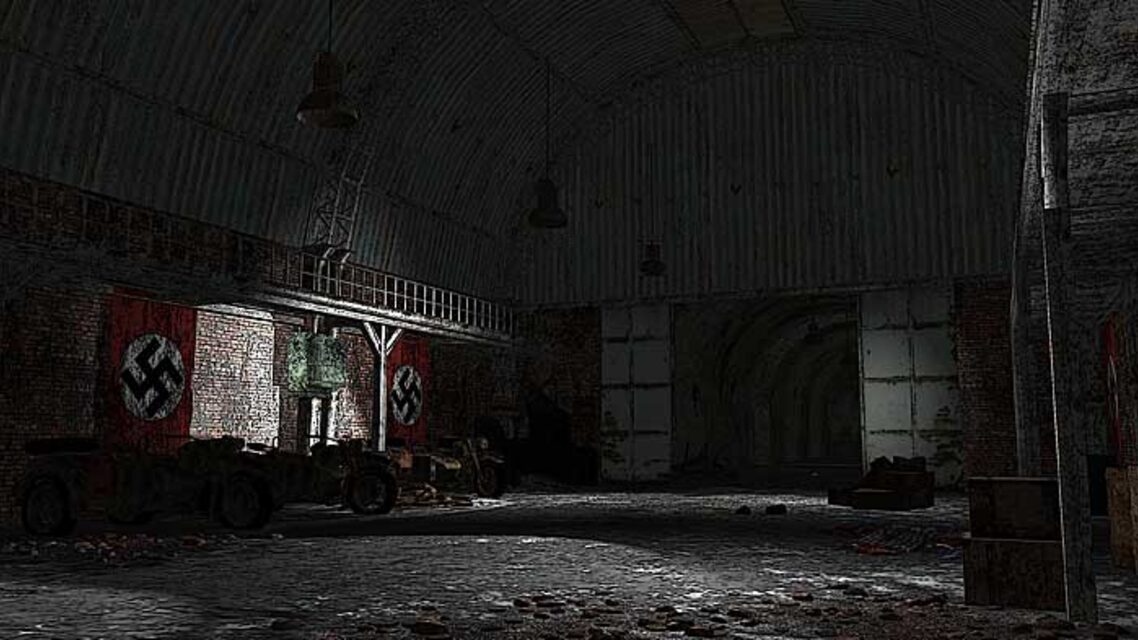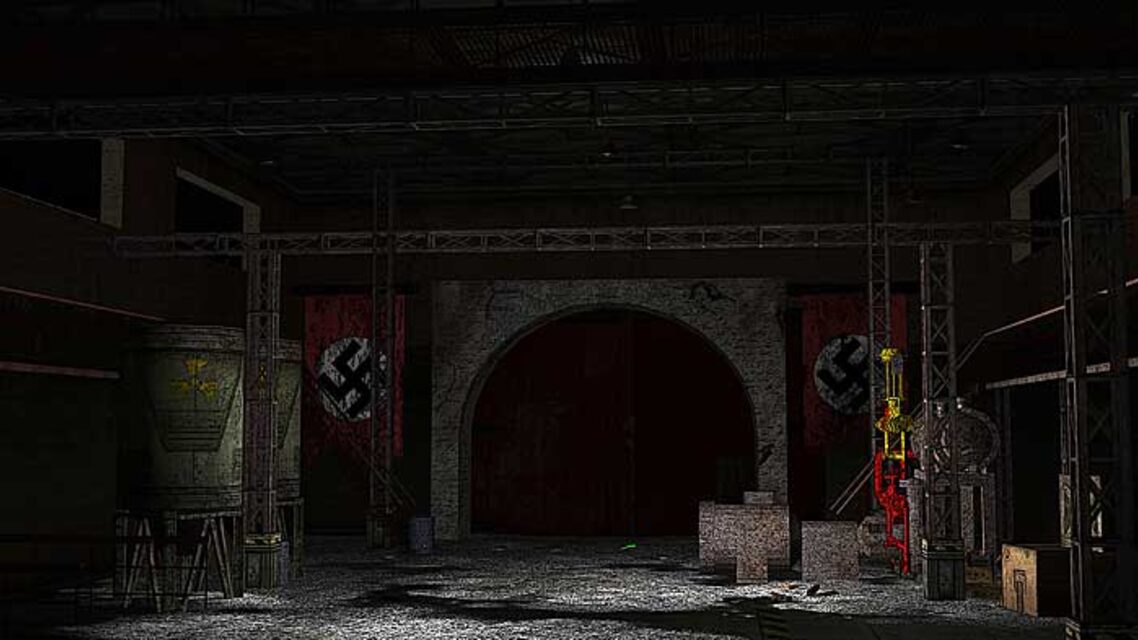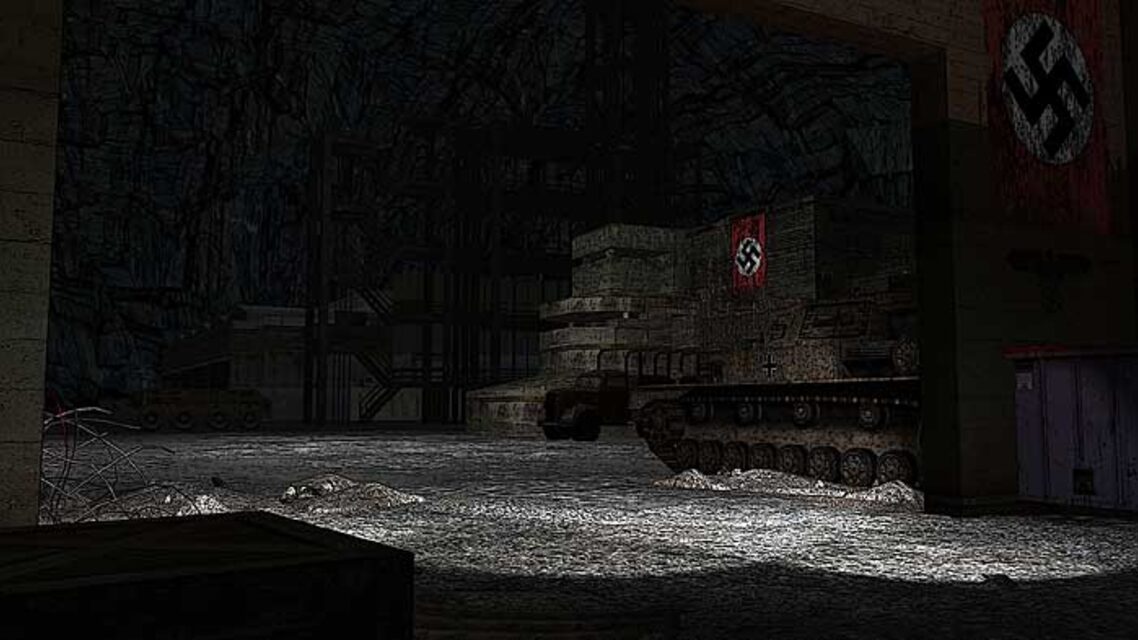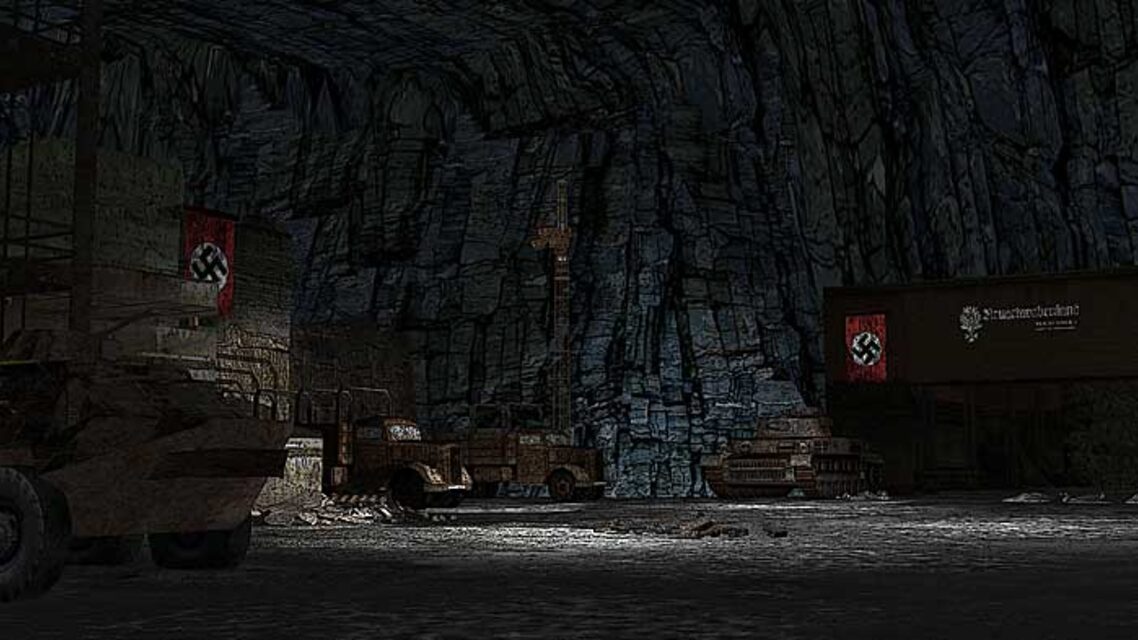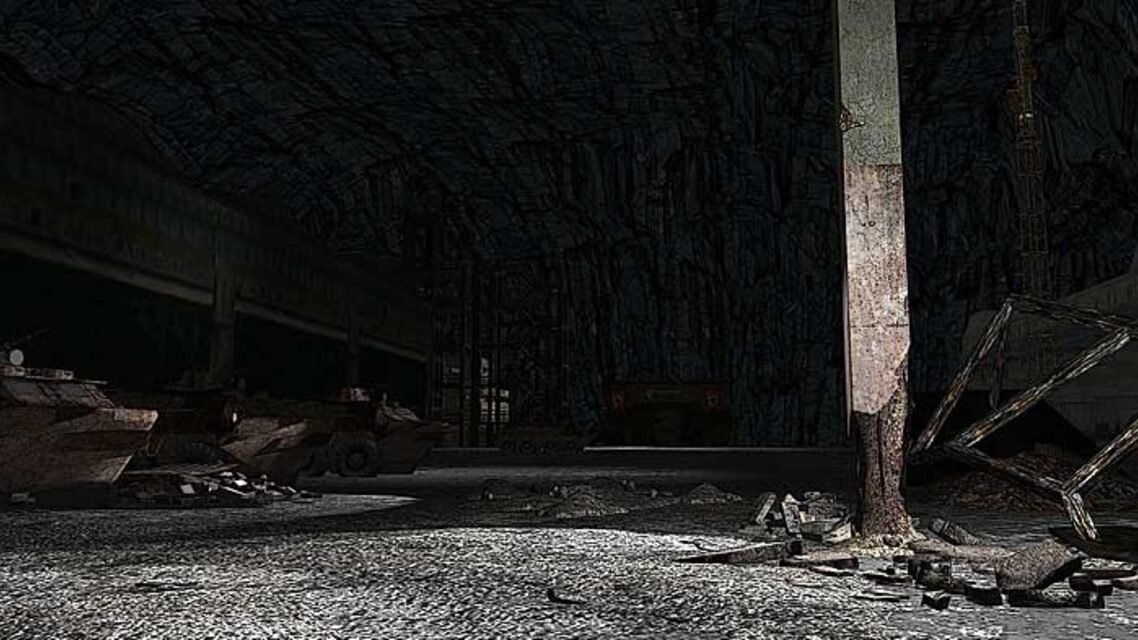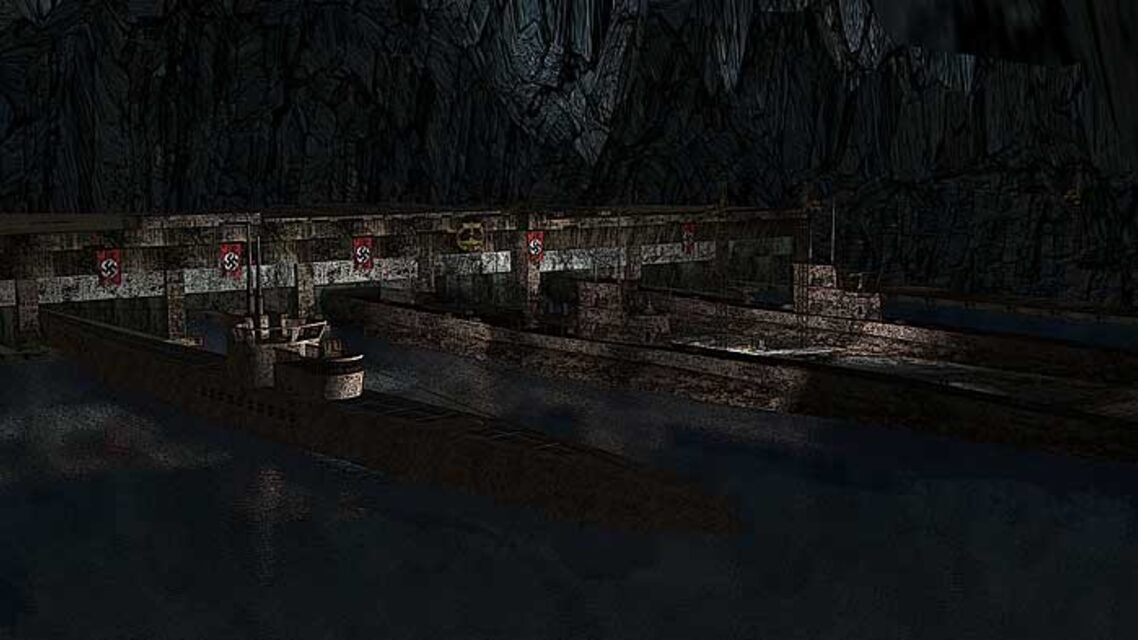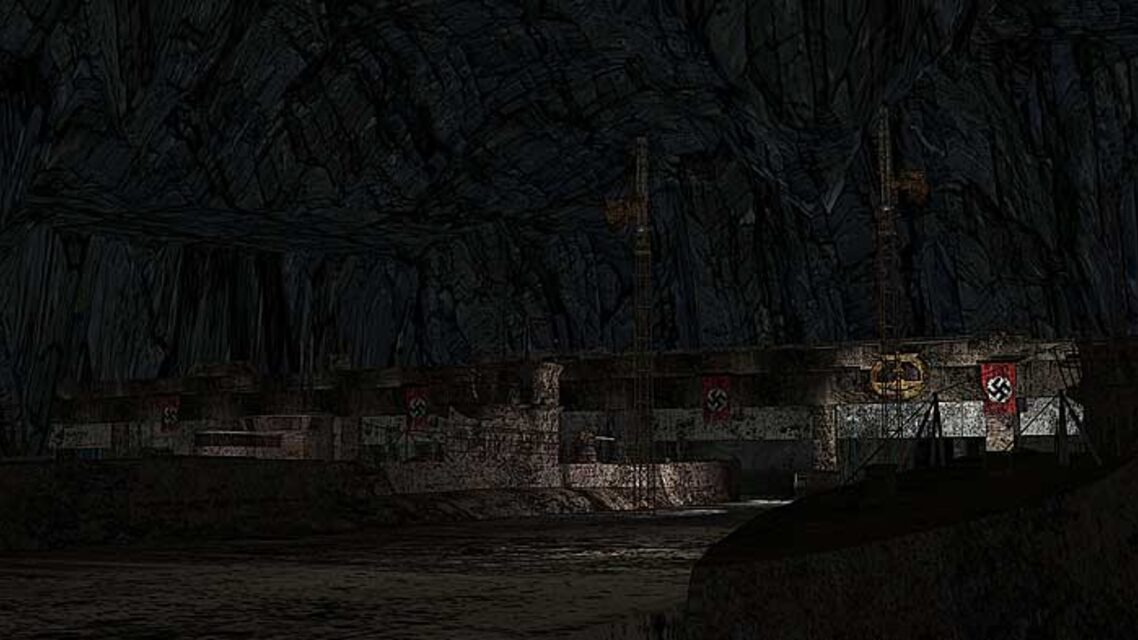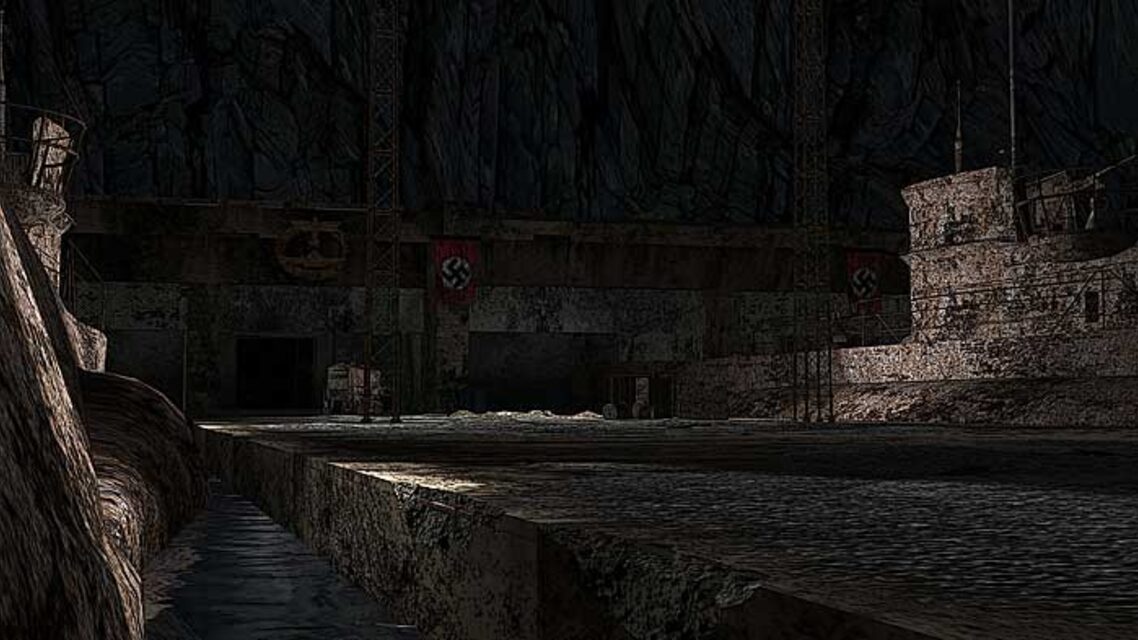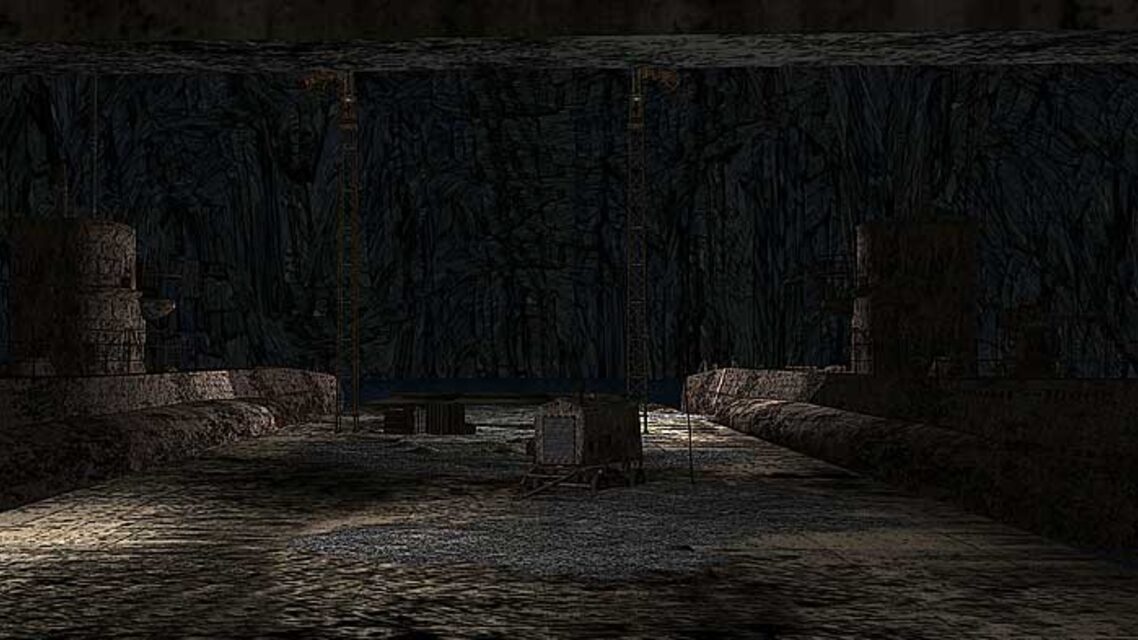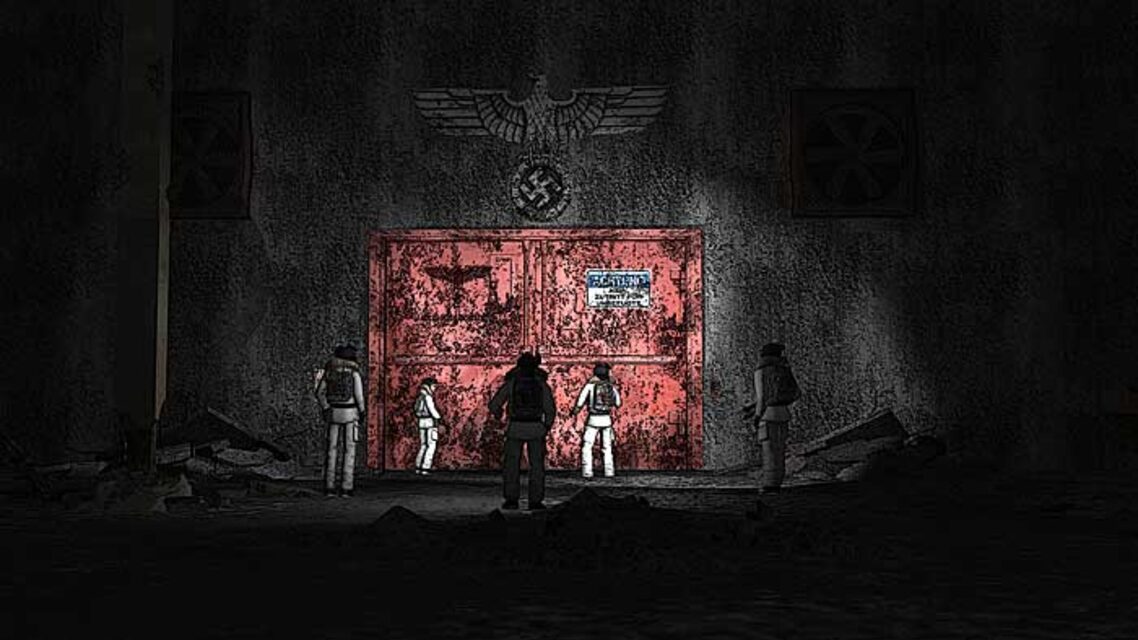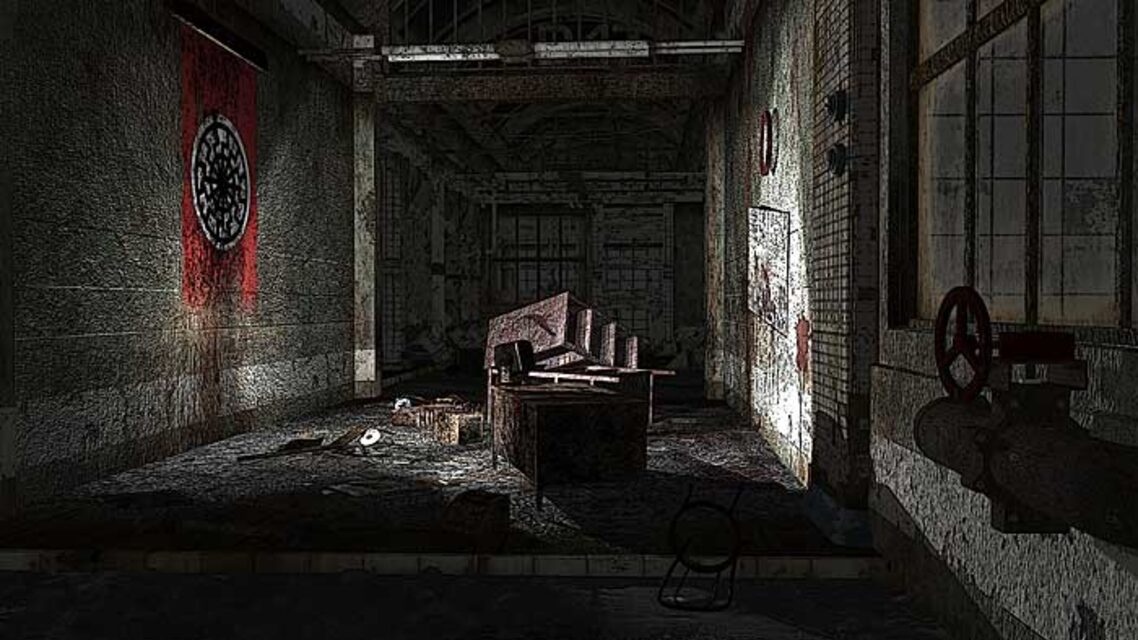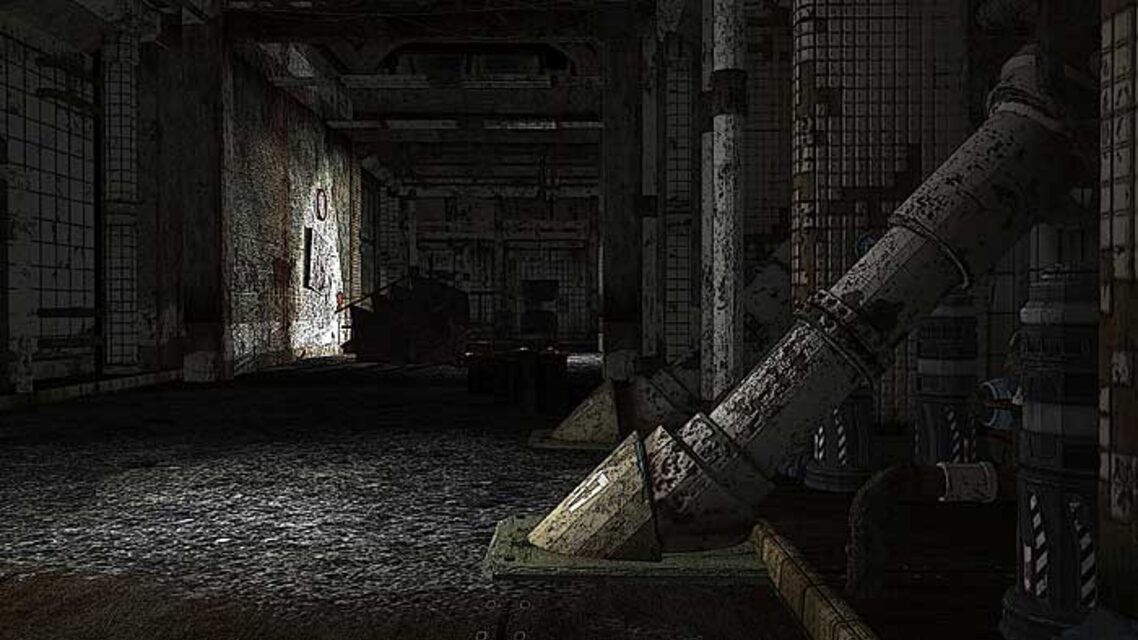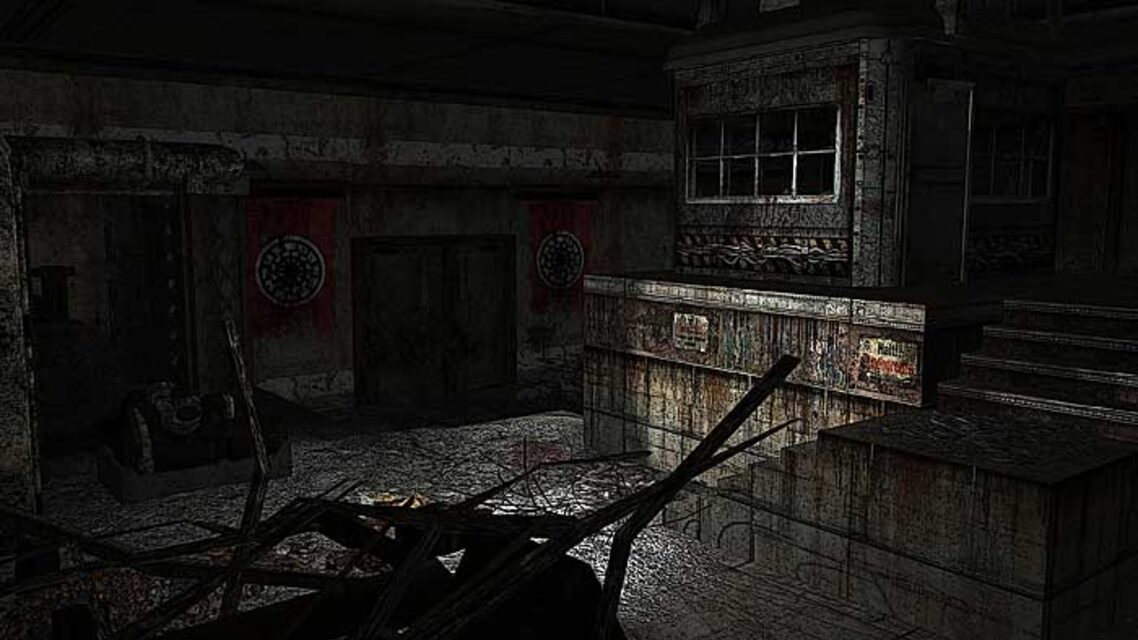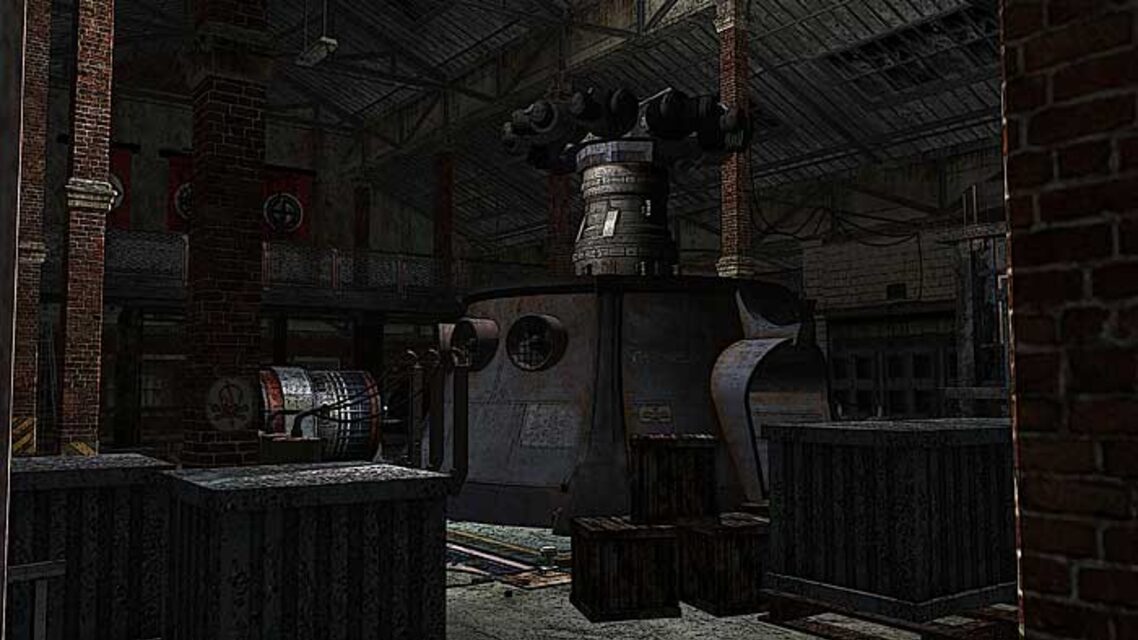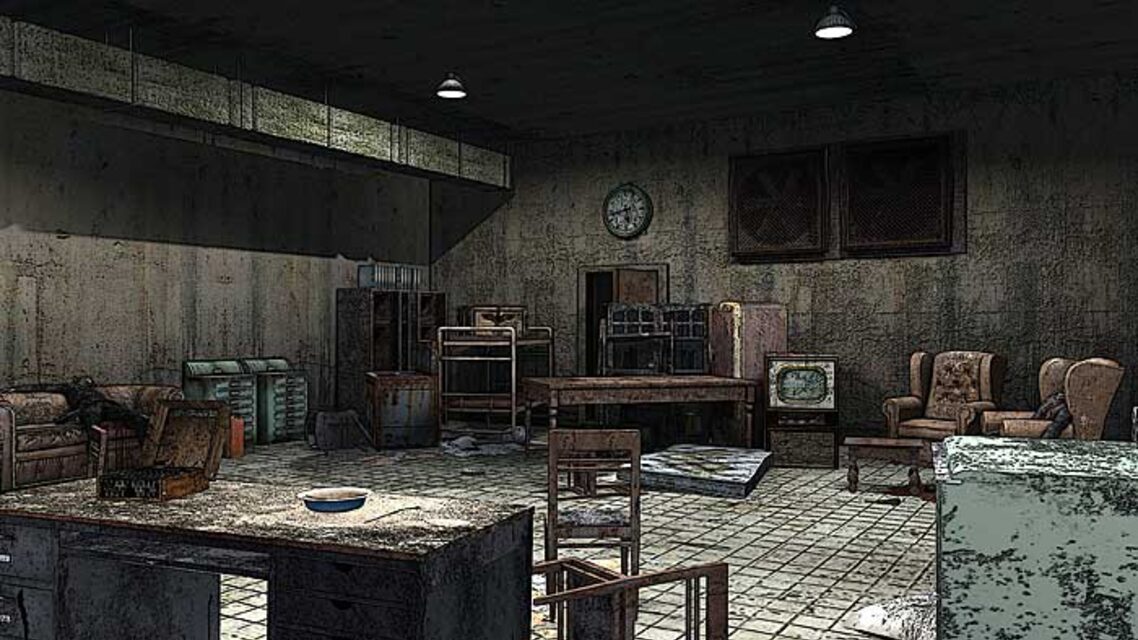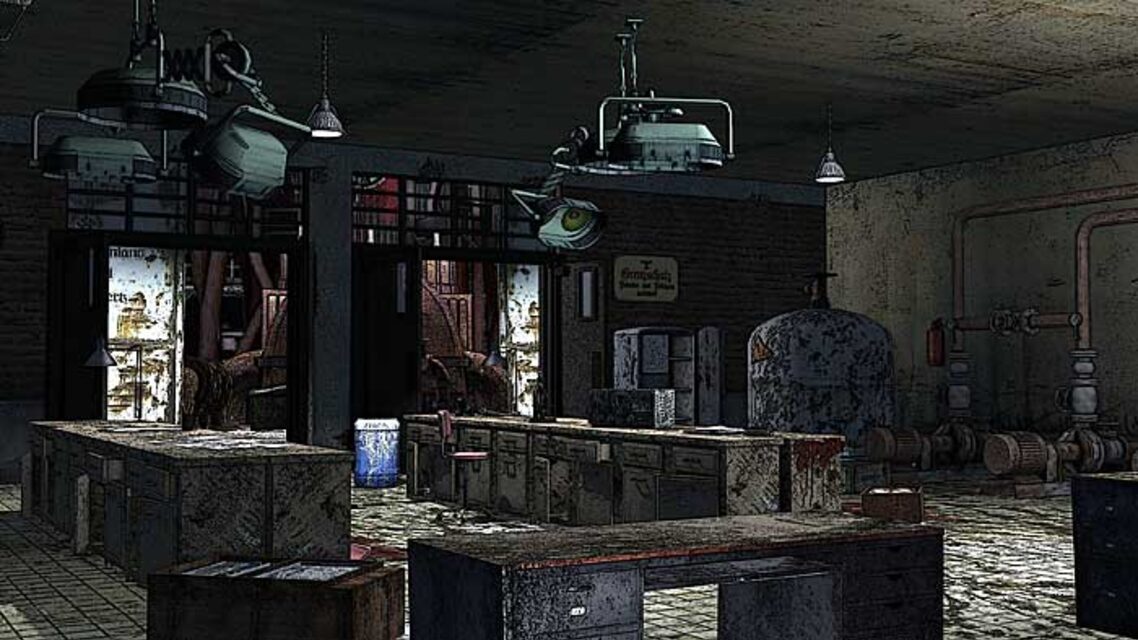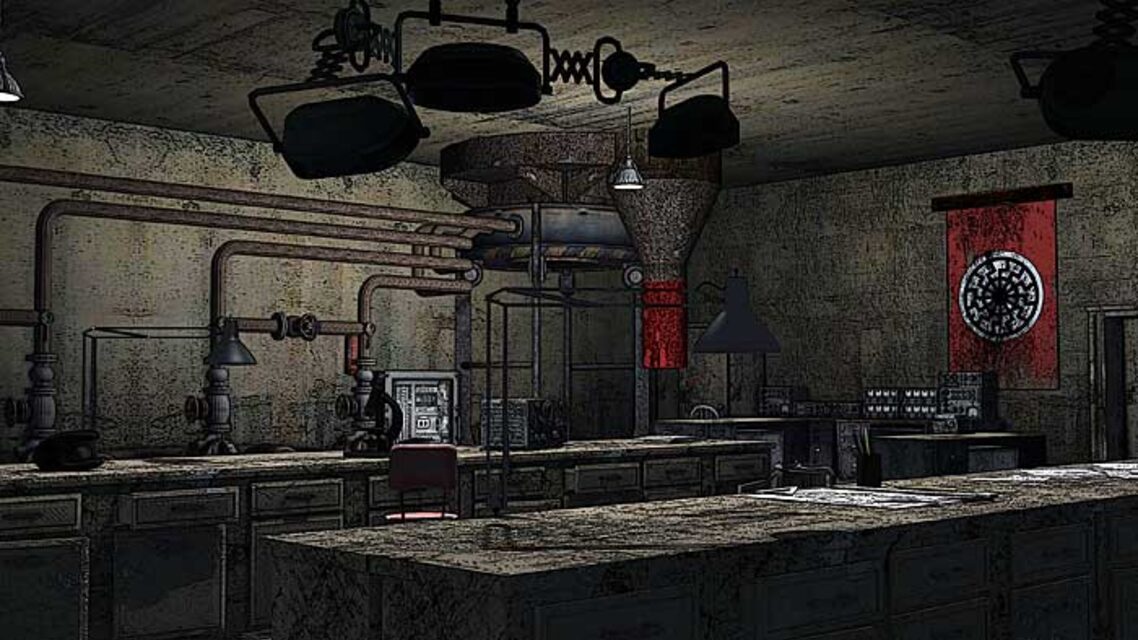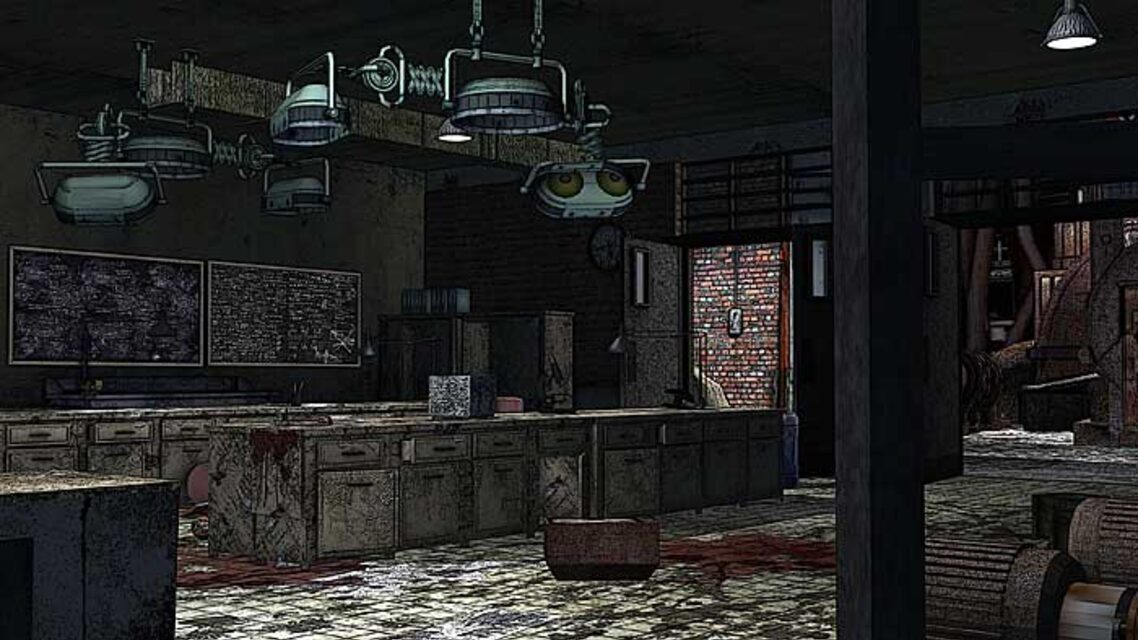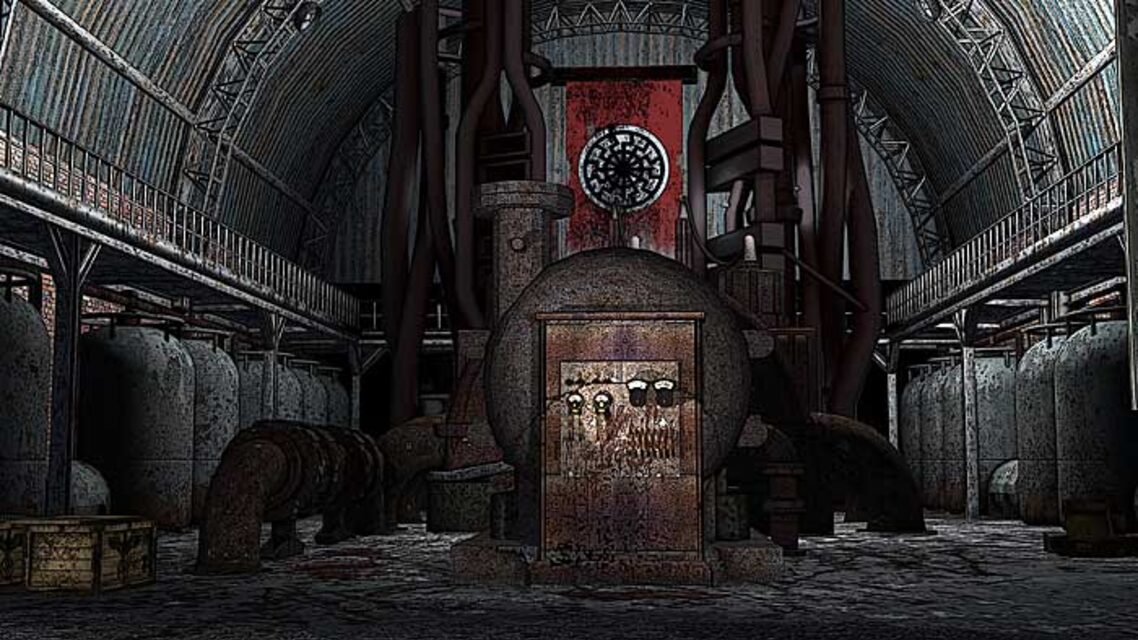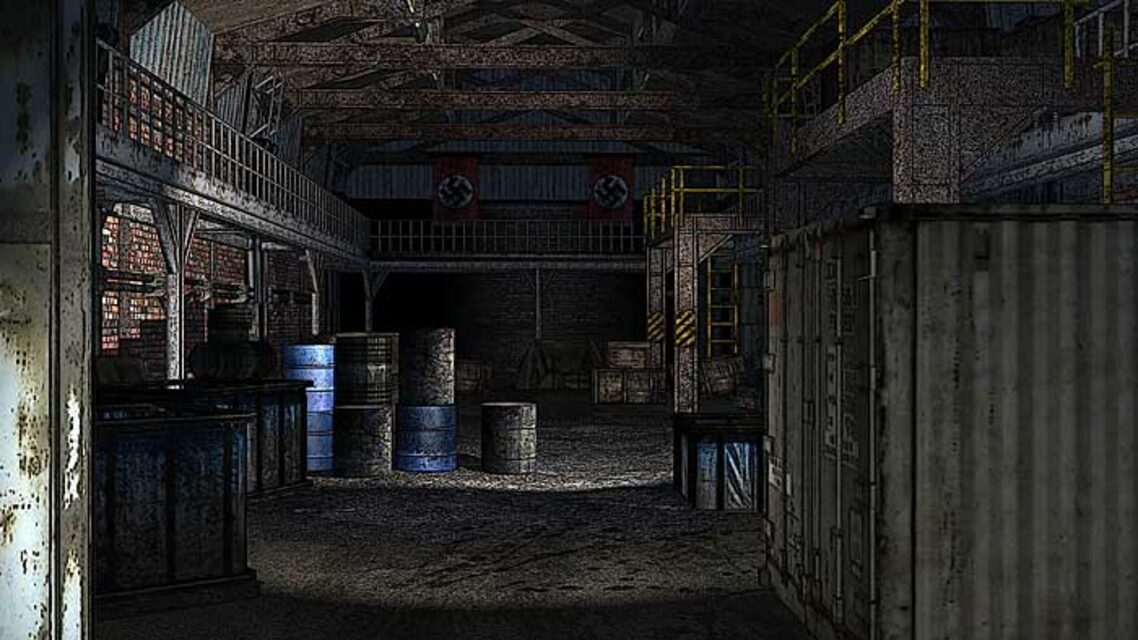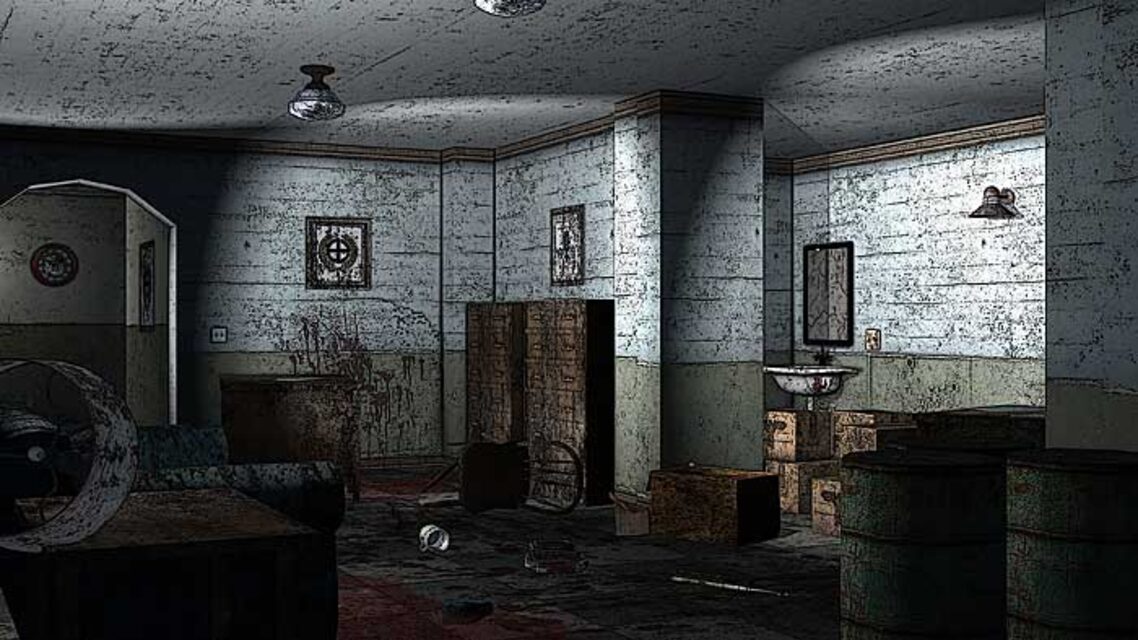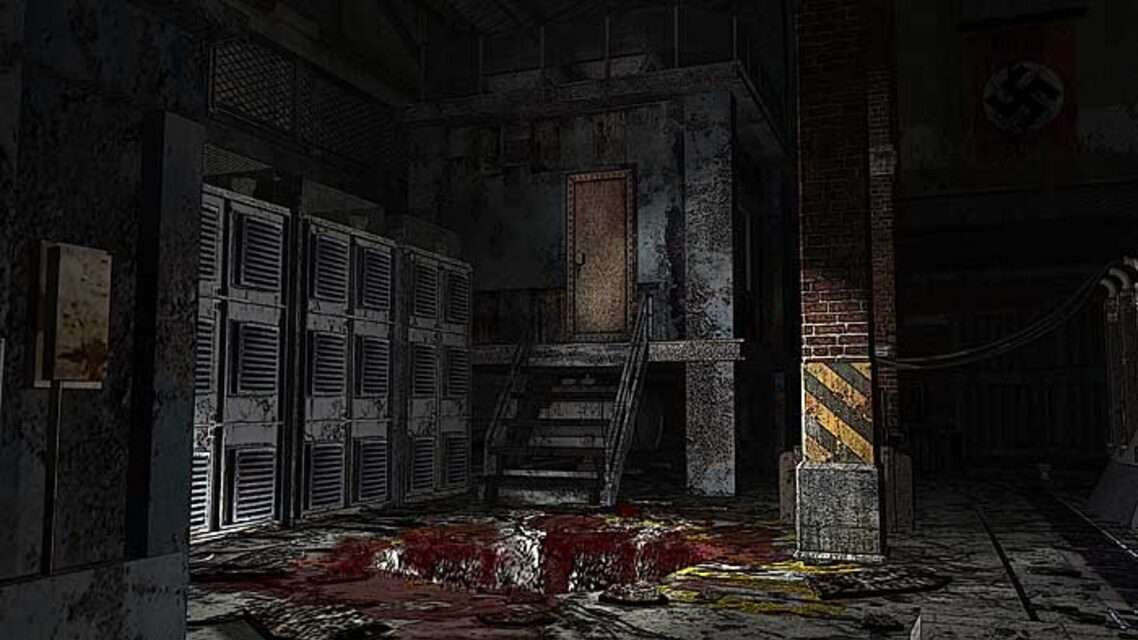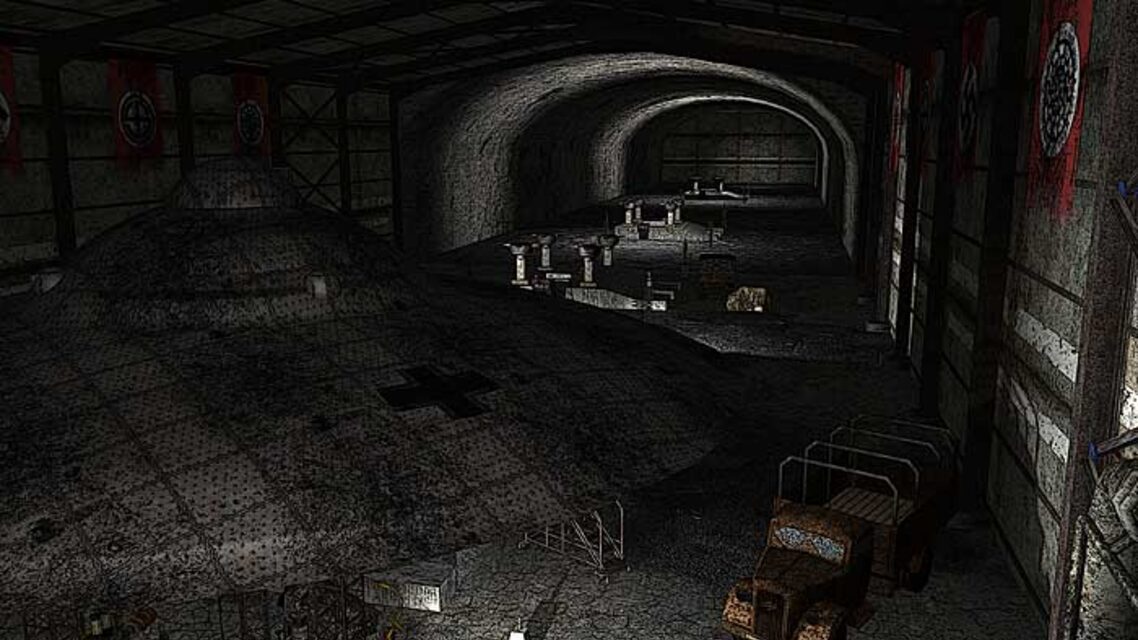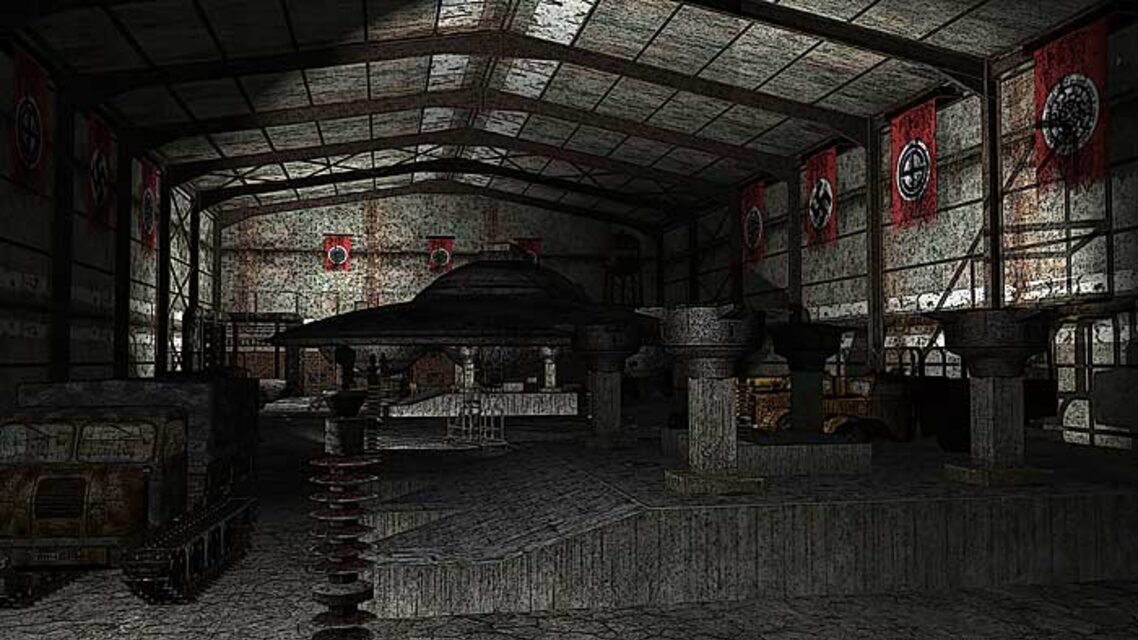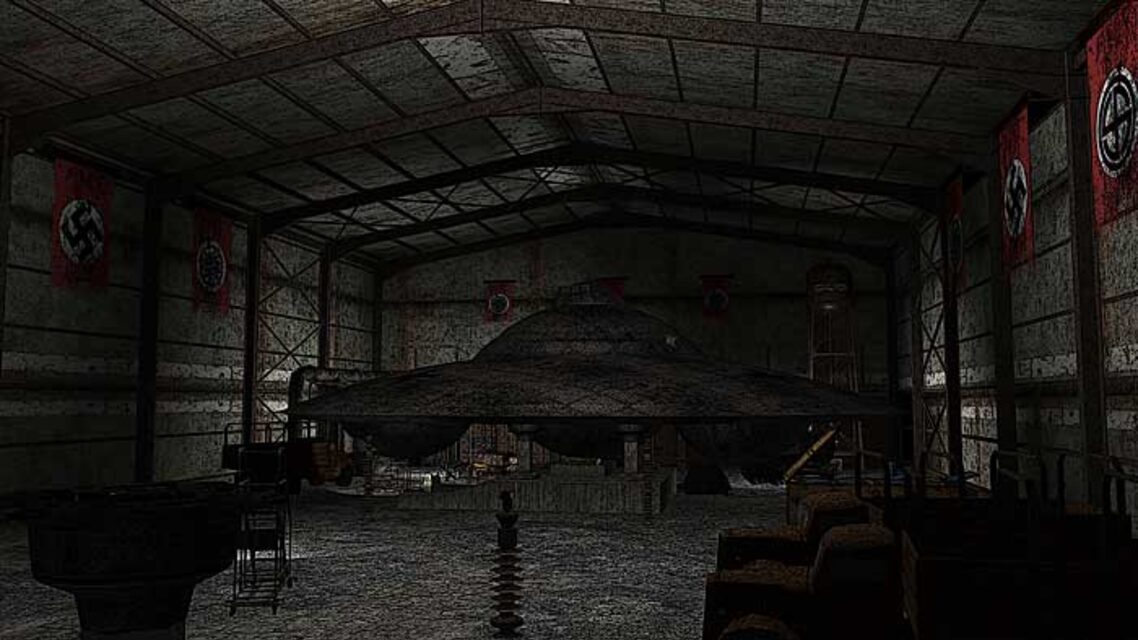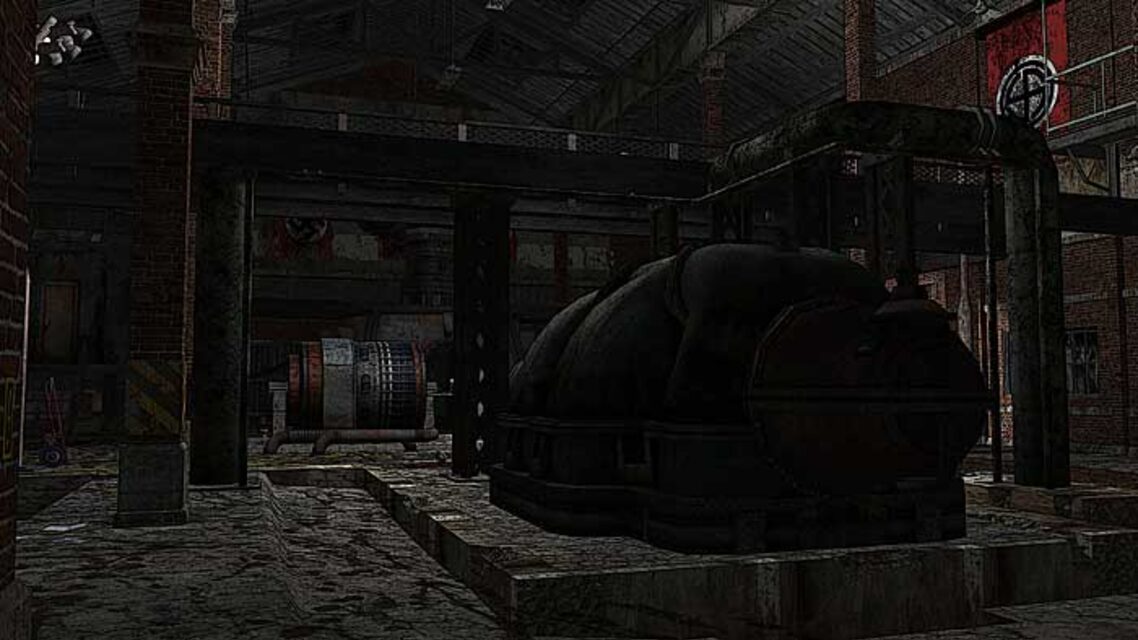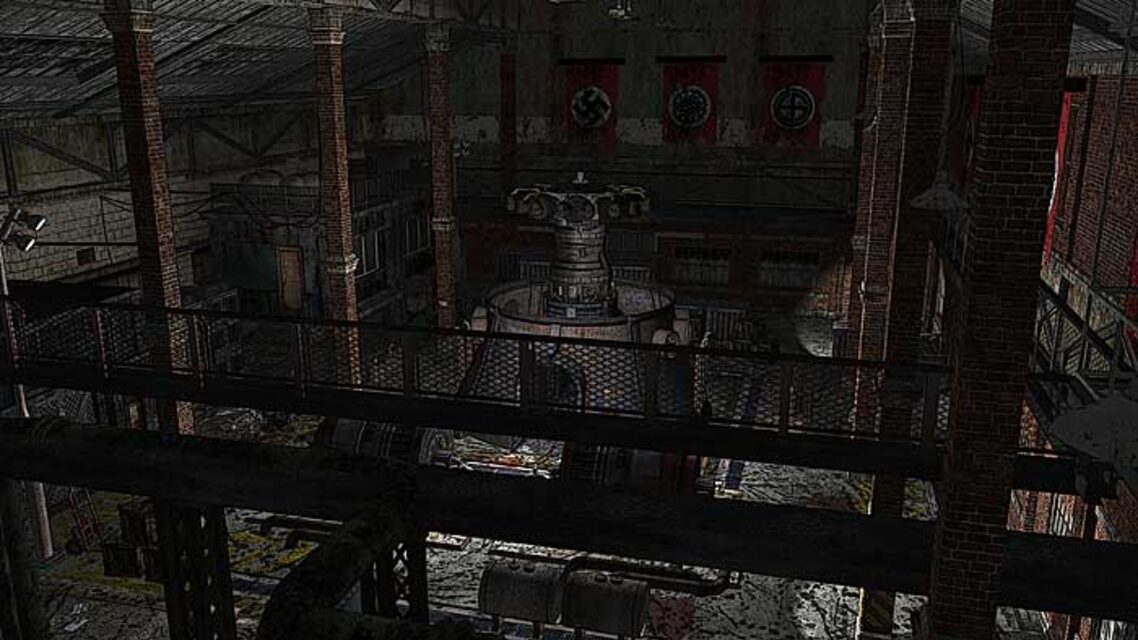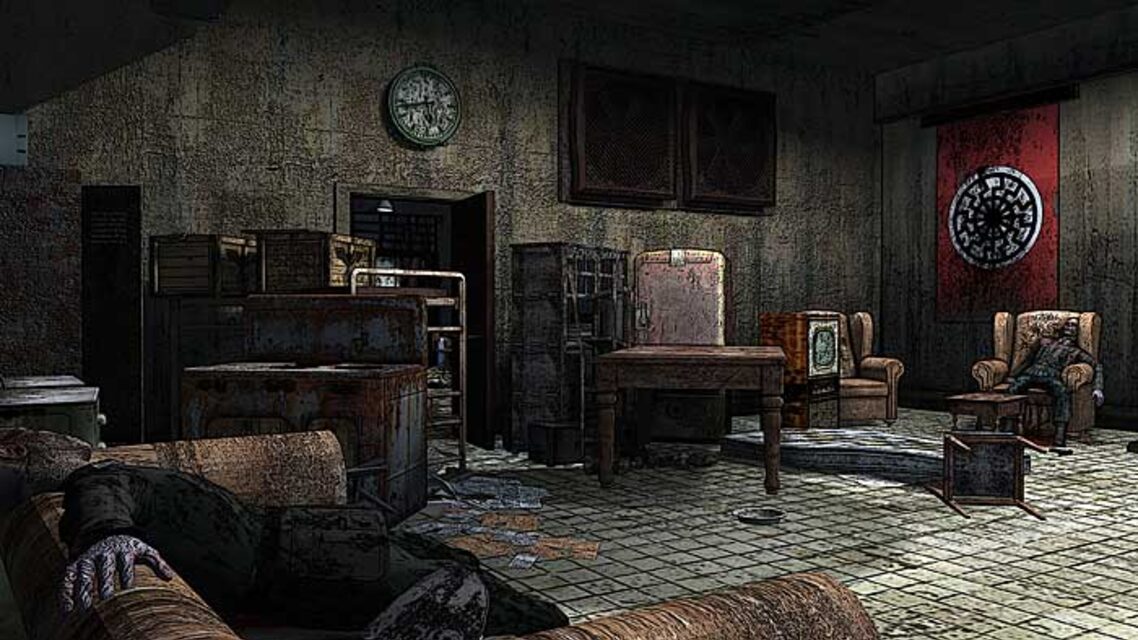- MAIN INDEX: Adolf Hitler Death and Survival: Legend, Myth and Reality
- Antarctic Haven
- Station 211
- Aryan UFOs and Antarctic Bases
- 'Third Reich - Operation UFO Nazi Base in Antarctica'
- Nazi Ufos and Secret Bases at the South Pole
- Hitler’s Antarctic base: the myth and the reality
- Nazi UFOs and Antarctica
Aryan UFOs and Antarctic Bases
29 November 2002 | Source: Pravda.ru
Much has been said about the "UFO" developments of the Third Reich; however, some important questions still remain. Were the Germans actually successful with these developments or not? According to some sources, an UFO crashed near the city of Freiburg in 1936. The UFO was found, and it’s likely that German scientists with the assistance of the Schutzstaffel [SS] managed to repair and even test the UFO’s energy system and propulsion systems.
However, all attempts to reproduce the alien technology faied. That is why there was only one variant of the flying apparatus. Representatives of three occult societies, "Thule", "Vril" and "Ahnenerbe", ran those projects.
For five years, the Germans carried out work for the creation of a secret project code-named "Base-211," This has been determined by several independent experts. By the end of WWII, the Germans already had nine scientific enterprises where "flying disk" projects were tested. Many scientists are positive that at least one of these Third Reich enterprises was transferred to the Antarctic.
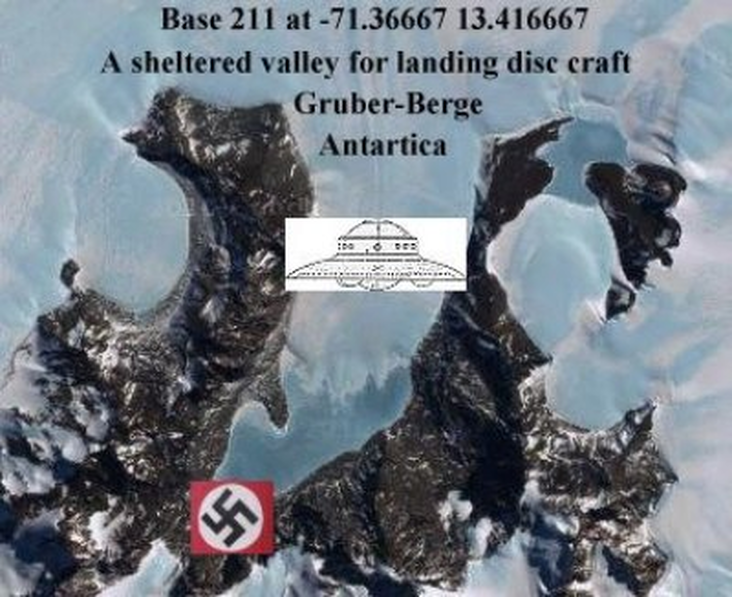
Famous researchers of the Third Reich’s Antarctic mysteries, R. Vesko, V. Terzisky, and D. Childress, claim that from 1942, thousands of prominent scientists, pilots, politicians with their families, and members of the Hitlerjugend were taken to the South Pole via submarine.
Some scientists believe that a German base still remains in the Antarctic. Moreover, it is even said that there is an underground Aryan city called New Berlin, which has a population of two million people.
It is claimed that population of this city researches genetic engineering and space technology. UFOs have been witnessed several times near the South Pole, which is an indirect confirmation of the base’s existence there. In 1976, with the help of the latest technology, the Japanese managed to detect nineteen round objects at the same time; the objects dived from space to the Antarctic and disappeared from the radar screens.
-- "Nastoyashchy Saratov" Newspaper
Translated by Maria Gousseva
Strange Secrets of the Antarctic Reich
A magazine article published June 2004 in Portugal is shedding new light on the strange cruise of the German ship 'Schwabenland' and the origins of the Antarctic Reich
One of the new problems that emerged in the early Twentieth Century, right after World War I, was the transportation of mail between Europe and the Americas.
In the 1920s, two companies contested for the newly-opened mail routes across the Atlantic Ocean.
These were Pan American Airways and Luft-Hansa, the German airline. Trips by air over the vast ocean created numerous problems with refueling, logistics and maintenance. Both companies decided to use hydroplanes, and the Azores [owned by Portugal] became the logical replenishment point.
German catapult ships that became famous included the 'Bremen', the 'Westfalen' and the 'Schwabenland'.
This last one, built in 1925, could launch hydroplanes weighing as much as 14 tons. The 'Schwabenland' was a modern ship, well-equipped and with a modern communications system, plus an excellent on-board meteorological station. The vessel often operated out of Horta and Faial in the Azores.

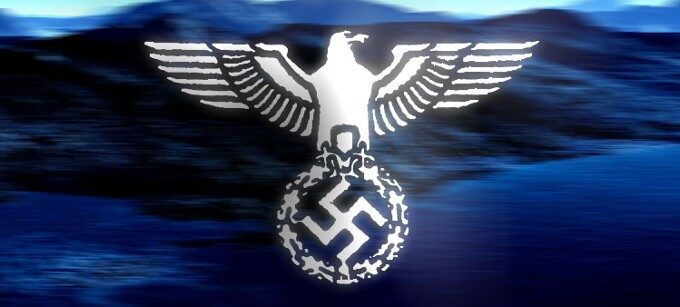
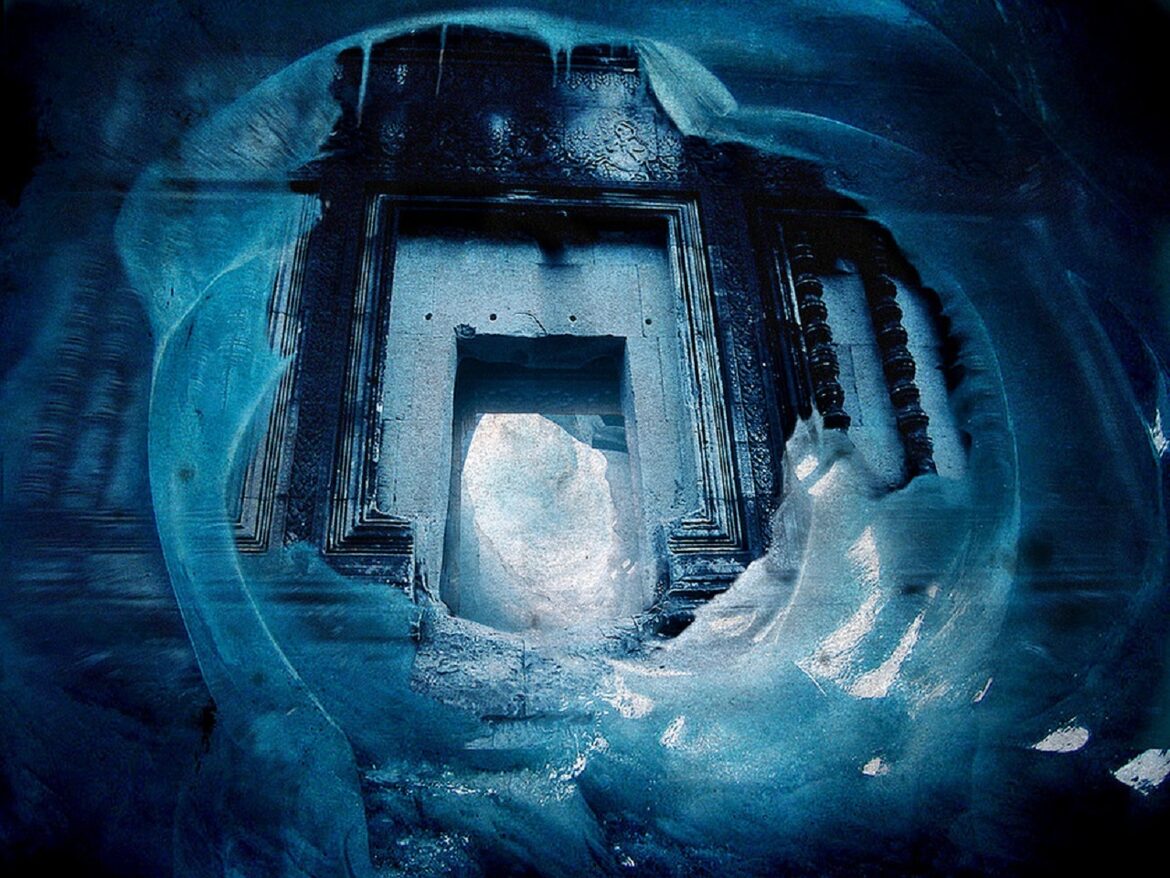
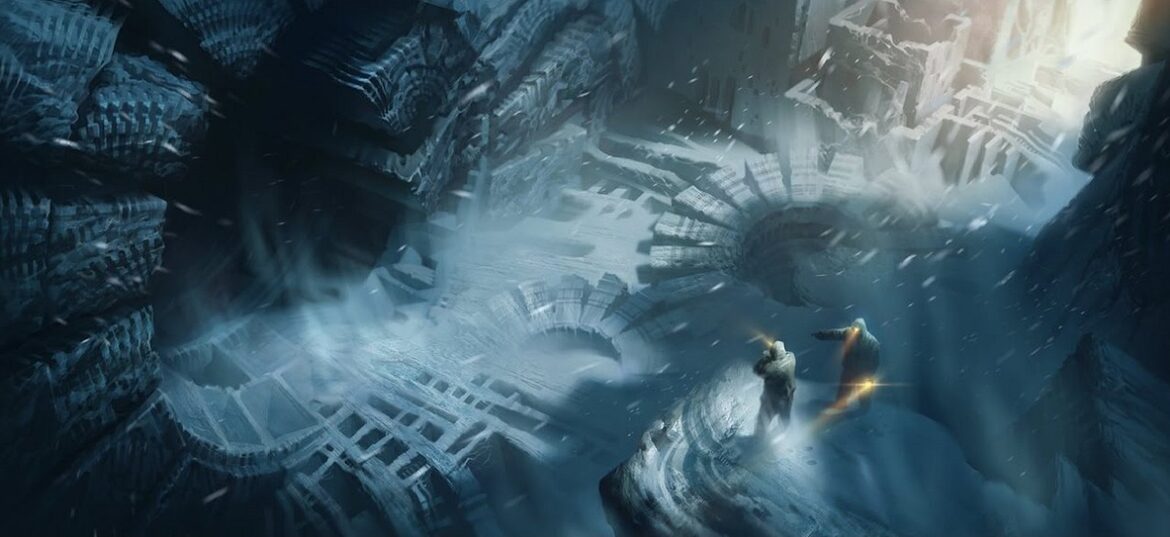
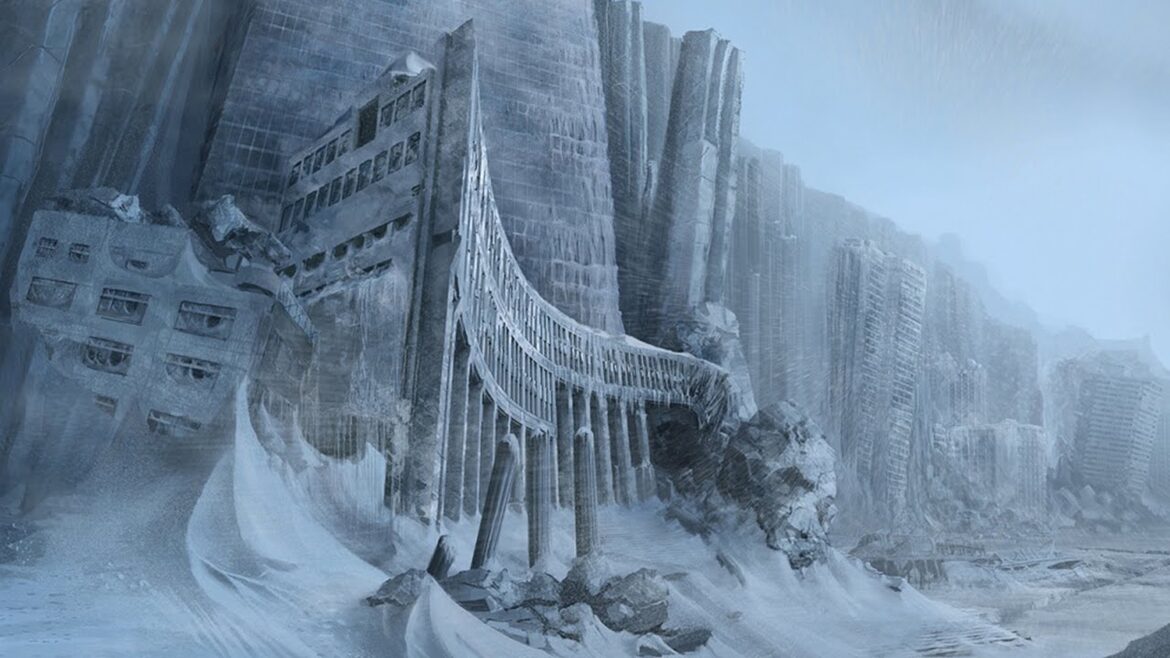
In "The Narrative of Arthur Gordon Pym of Nantucket" Edgar Allen Poe wrote about whalers encountering strange ruins and hinted at an alien presence on the icebound southern continent, linked to the haunting phrase Tekeli-li.
So where did Poe get the idea for mysterious ruins in Antarctica? Probably from talking to returning American whalers in the Baltimore waterfront taverns that he loved to haunt. Clearly some very strange things were was going on in Antarctica during the late 1830s....
A century after Poe penned his Antarctic tale, the 'Schwabenland' returned to Hamburg. Following a swift and effective refitting, the ship departed for Antarctica.
The official German Antarctic Expedition of 1938-1939 assumed a long-term strategic importance. Led by Captain Alfred Ritscher, a veteran Arctic explorer, this scientific expedition carried out extensive geographical, meteorological and zoological research in Queen Maud Land, which had formed part of the Norwegian territorial claim on Antarctica since 1930. Two large flying boats of the Dornier-Wal type flew daily from the expedition ship Schwabenland, taking over 11,000 photographs, occasionally landing, covering in all some 600,000 square kilometers and photomapping 350,000 square kilometers. The discovery of high Alpine peaks [Mühlig-Hoffman Mountains] and a group of warm-water oases [Schirrmacher Lakes] amid the frozen wastes was of particular interest as it suggested that there were hospitable microclimates [ecosystems] within the icebound continent.
The explorers used harpoons with Swastika flags, dropped from the air, to mark off their new territory of Neuschwabenland. They also drew up a detailed map of the region.
One of the people who led the expedition was Helmuth Wohlthat, a former German fighter pilot of World War I who had served in Hermann Göring's Jagdstaffel and remained friends with Göring after the war. Wohlthat was an economist by trade and represented the Third Reich at international financial conferences with British and American bankers. A strange choice to play a leading role in an Antarctic expedition, to be sure. But the Portuguese article asserts that Wohlthat was also a member of the Vril Society and the Thule Society, the mystical forerunners of the Nazi party.
Also aboard the 'Schwabenland' was a sizable contingent from Himmler's SS-Ahnenerbe, a kind of "Ministry of the Occult".
Wohlthat prepared an extensive report of the expedition which he radioed to Göring on 9 May 1939.
In October of 1939, one month after the beginning of World War II, the 'Schwabenland' was turned over to the Luftwaffe. On 17 December 1939, the ship again left Hamburg, headed for Antarctica, packed with scientists and equipment. This time they were going to build a permanent base in Antarctica.
Running the Royal Navy's blockade, the Schwabenland returned to Hamburg on 11 April 1940. The ship and her crew were received in Germany as heroes.
But not all of the Germans had returned. A handful had remained behind at the base now called "Point 211".
In August 1942, the ship was sent to Tromso in Norway, which was then under German occupation. She travelled to Tromso in a convoy of 24 ships.
During the next year and a half, nobody knew where the 'Schwabenland' was. It was not possible to find any record of its whereabouts. The ship's registration was transferred to Norway, with the approval of the [Vidkun] Quisling government. At the same time, Hitler ceded to Norway a portion of the Antarctic territory claimed by Germany.
Late in 1942, the Schwabenland came under the direct control of the SS. Himmler had the "home port" name on her stern changed from Oslo to Stockholm, and the ship began traveling under a false flag, that of neutral Sweden.
On 19 May 1943, the Allies began to suspect that something strange was happening in Antarctica, mainly because of the large number of U-Boats passing through the South Atlantic. Himmler was using large supply submarines -the famous Milchkuh U-Boats of Admiral Dönitz- to ferry Organisation Todt construction supplies and equipment to Point 211. Also heading south were thousands of Waffen-SS soldiers and the Antarktische Siedlungsfrauen [ASF].
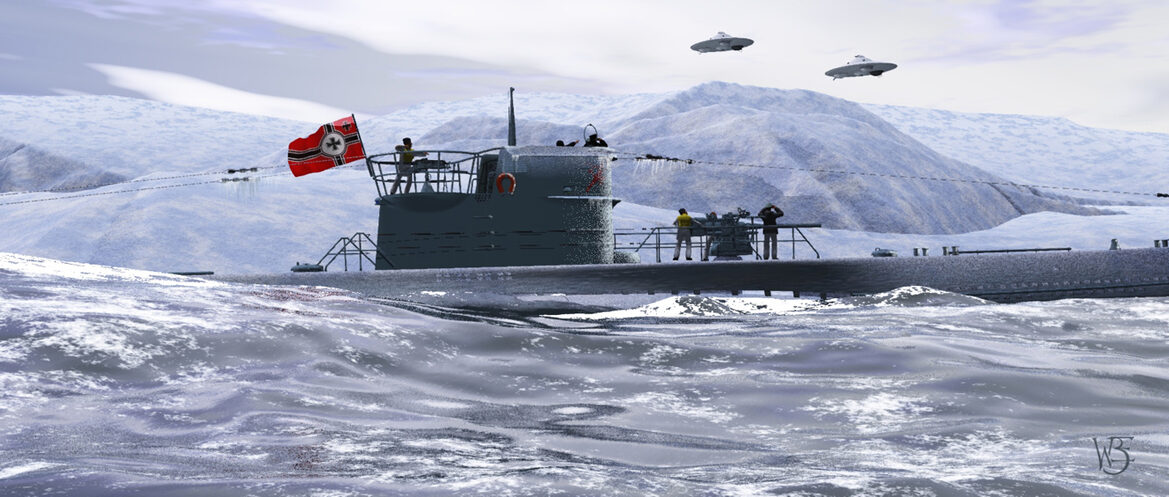
At this time, President Roosevelt sent a coded message to President Getulio Vargas of Brazil, complaining that Portugal's [fascist] Prime Minister Dr. Antonio Salazar refused to permit the construction of an Allied naval base in the Azores. Roosevelt told Vargas that Allied intelligence had learned of an existing Nazi submarine base in the islands.
Unknown to Dr. Salazar, General Eisenhower had prepared plans for a pre-emptive occupation of the Canary Islands [owned by Spain] and Cabo Verde [owned by Portugal]. From these new bases, Allied "sub-killers" would destroy the U-Boat "migration" to Antarctica.
An OSS [Office of Strategic Services, World War II forerunner of the CIA] document dated 23 May 1944 affirmed that "Salazar continues to play for time" before drafting a formal response for the Allies.
Portugal is geographically farther from Germany than are Switzerland and Sweden, but the country and its colonies were still very vulnerable to pressure from the Reich. Moreover, the authoritarian Portuguese dictator, António de Oliveira Salazar, was sympathetic to the Axis powers [especially after siding with Franco in the Spanish Civil War]. These factors resulted in considerable collaboration between Portugal and Nazi Germany. Salazar provided shipments of Tungsten to the Third Reich that were important for the German armaments industry, and allowed German espionage agents to operate in his country. Portugal, in fact, like Switzerland, was a hive of spying during the Second World War.
Because Salazar incorporated many facets of fascism into his government -- including corporatist social and economic policies, the debasement of democracy and parliament, an extensive secret police, and a ban on strikes -- he was viewed favourably by Hitler and Mussolini, as well as by Spain's General Franco. He used that approval to obtain financial profit. While the exact amount of that profit is difficult to determine, there are clues that convey its value. The 44 tons of German gold which the United States wanted Portugal to surrender at war's end [going so far, to compel agreement, as to freeze Portuguese assets in the U.S.] is a case in point.
Despite his ties to the Axis nations, Salazar also, at times, co-operated with the Allies. He leased bases in the Azores to the British, and he permitted many refugees who escaped the Nazis to travel through Lisbon, Portugal's capital.
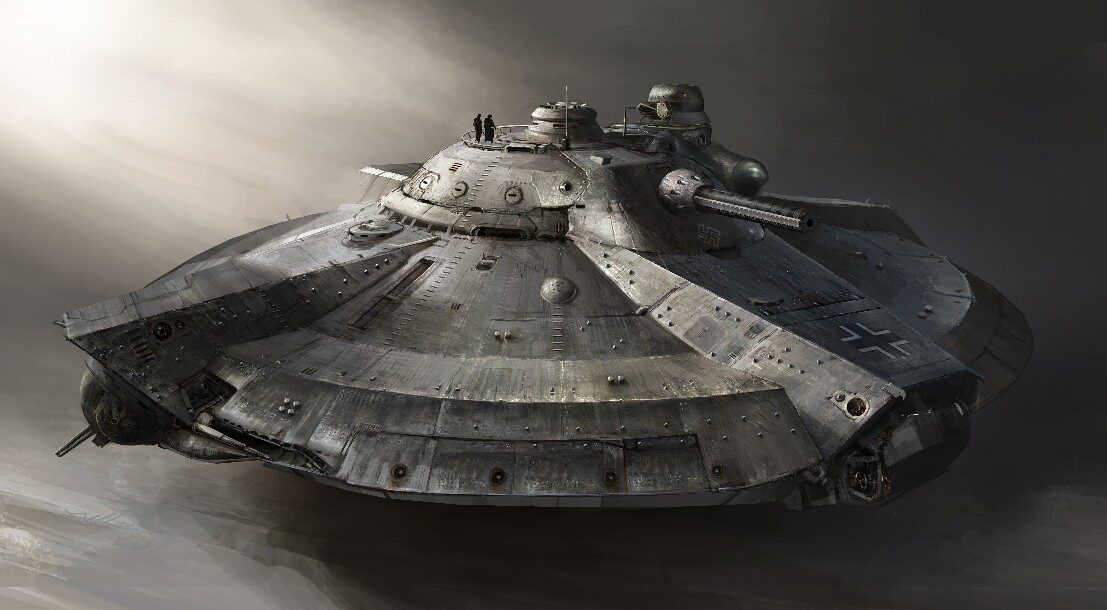
Antarctica: A Nazi Base?
An Excerpt From "Alien Agenda"
By Jim Marrs
With the current mysterious happenings in Antartica concerning Lake Vostok, an old theory is being resurrected - that German Nazis as early as the 1930s may have built a secret base at the South Pole.
While this idea undoubtedly will strike most people as absurd, there is tantalizing evidence to suggest that something along this line might have some truth to it.
Long-standing banking and business connections allowed high-ranking German leaders in 1944 to forge a formidable Nazi-controlled organization for postwar activities.
ith wrote:
"In researching the shape of totalitarian control during this century, I saw that the plans of the Nazis manifestly did not die with the German loss of World War II.
"The ideology and many of the principal players survived and flourished after the war, and have had a profound impact on post-war history, and on events taking place today".
Orvis A. Schmidt, the U.S. Treasury Department’s director of Foreign Funds Control, in 1945 offered this description of a Nazi flight-capital program:
"The network of trade, industrial, and cartel organizations has been streamlined and intermeshed, not only organizationally but also by what has been officially described as "‘Personnel Union"
Legal authority to operate this organizational machinery has been vested in the concerns that have majority capacity in the key industries such as those producing iron and steel, coal and basic chemicals.
These concerns have been deliberately welded together by exchanges of stock to the point where a handful of men can make policy and other decisions that affect us all".
Could one of those "decisions" have been the creation of a Nazi base connected to the development of UFOs? While this notion may superficially appear to be sheer nonsense, the public record offers compelling --- if incomplete --- evidence to support this idea.
One theory is that Martin Bormann and other top Nazis escaped to South America and on to a secret base in Antarctica where they built UFOs so sophisticated that their secret Nazi empire has exerted significant control over world events and governments to this day.
While there can be no question that the business and financial network created by Bormann wields a certain amount of power even today, evidence for the existence of a major Nazi base containing UFOs is virtually nonexistent, consisting primarily of the known exploration of Antarctica’s Queen Maude Land --- renamed Neuschwabenland by the Germans --- in 1938 and some unverified statements.
Reportedly, German Navy Grand Admiral Karl Dönitz stated in 1943:
"The German submarine fleet is proud of having built for the Führer in another part of the world a Shangri-La on land, an impregnable fortress".
And it has been reported that U.S. Admiral Richard Byrd, upon his return from an expedition to Antarctica in 1947, stated it was "necessary for the USA to take defensive actions against enemy air fighters which come from the polar regions" and that America could be "attacked by fighters that are able to fly from one pole to the other with incredible speed".
Advancing the idea that the Nazis continually shipped men and material to the South Pole throughout the war years, author R. A. Harbinson wrote:
"Regarding the possibility of the Germans building self-sufficient underground research factories in the Antarctic, it has only to be pointed out that the underground research centers of Nazi Germany were gigantic feats of construction, containing wind tunnels, machine shops, assembly plants, launching pads, supply dumps and accommodation for all who worked there, including adjoining camps for slaves --- and yet very few people knew that they existed".
But, while tales of a secret Nazi base in Antarctica may appear plausible to some, the idea that a warm water location at the South Pole has remained undiscovered and no one has escaped or deserted the place in more than 50 years stretched belief to the breaking point in years past.
But with the new revelations of 60-70 degree temperature water, magnetic anomalies suggesting the possibility of a hidden city or base and the obvious back out taking place concerning current events at the pole, the idea of a secret base is no longer so far fetched.
There are lines of magnetic force emanating from the South Magnetic Pole.
What is strange about the North and South Poles is the way in which the magnetic lines of force move.
The magnetic lines of force originate from a "hole" just off the coast of Antarctica.
There are Chilean and Peruvian scientists/bases being near or along the route of UFOs emanating from inside the Earth.
Many UFOs fly directly south-north along South America. If one draws a line from South America, through the Antarctic bases of Chile, through the South Pole to the South Magnetic pole - one gets a straight line.
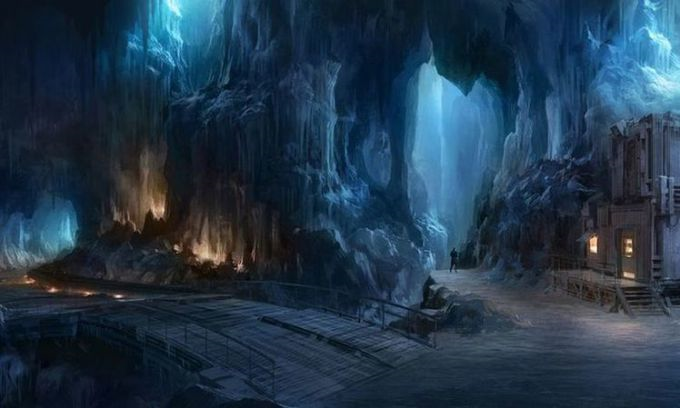
What's interesting about this potential "UFO route" is that UFOs coming from Inside the Earth would end up flying over the America South Pole base.
However, the line of flight is such that the only places in the Antarctic where you'd stand a chance of seeing these UFOs is in the "Weddell sea" area where South American countries have their bases and at the Scott Base at the South Pole.
The other parts of the UFO route is somewhat offset from the commonly traveled routes and so there's little chance of running into UFOs by accident at any other places. That would explain why the US Government doesn't like visitors to the South Pole base: It's not that the hole is AT or NEAR the South Pole base [as originally thought], but along the route from the real hole in the oceans off the coast.
Bob Borino, in an article, 'UFO Bases Found in Antarctica' "Globe", 18 January 1983, quotes from certain scientists who believe that a subterranean UFO Base is located beneath the strange "Polynya Sea" in the Antarctica's Weddell Sea region.
Wendelle C. Stevens graduated from Lockheed Aircraft Maintenance & Repair School, Aviation Cadet School, and Fighter Pilot Advanced Training all as a very young 2nd lieutenant in the US Army Aircorps. Then he attended the Test Pilot School where he learned to fly everything in the Air Corps inventory and a few Navy aircraft as well. Later he was assigned to the Ptarmigan Project, recording and analyzing visual and EMF emissions throughout the Arctic. Looking for influences to aircraft systems caused by UFOs, they recorded all disturbances. This effort was quite productive, and the data was hand carried to Washington, DC nightly. Stevens owns the UFO Photo Archives, the largest of its kind in private hands – over 3000 of them. He is a founding Director of the Annual International UFO Congress.
On 24 March 2000 at the IUFOC Convention Stevens recalled early attempts by Vladimir Terzinski to speak about Nazi flying saucers at the conference, but most people were skeptical. He then reported on two Kugelblitz failures - the Spitzbergen Island crash and another on the coast near Heligoland. In both cases there was no doubt to the origin, and the Americans and British carried away much of the disk residue.
The disk that came down 8 miles SE of Laredo, TX was one of 32 Kugelblitz disks brought here from Germany after the war. It was being tested from White Sands with a rhesus monkey on board when they lost control.
Stevens mentioned some Haunebu ships about 100 feet in diameter, and smaller 30-foot Grille class ships.
There were apparently nine secret bases in Germany working on anti-gravity vehicles. One involved BMW. Stevens even recalls seeing a map of the base locations in recovered German documents while in the AF, but it was shredded. After Hitler learned that he could not use these anti-gravity vehicles in the war, he launched two expeditions to the Antarctic led by Admiral Ritscher, one in 1938 and one in 1942 after the eastern front losses.
The work on flying disks continued there.
The German airline Lufthansa lent one of its ships, the ‘Schwabenland’ for the expedition – hence the name that was given to the territory. The vessel was a so-called ‘catapult ship’, having before proved itself as a transporter and postal carrier in the South Atlantic. The ‘Schwabenland’ had two Dornier aircraft on board, named 'Boreas' and 'Passat'.
A steam catapult was used in flinging the planes, each weighing 10 tonnes, off the ship.
The planes were used for reconnaissance flights over the impassable Hinterland of the heretofore unexplored part of Antarctica, and were thus instrumental in the German Antarctic Expedition. Each plane could stay in the air for a maximum of nine hours and no inland airfields were constructed, so this provided the outer limit for the area to be explored.
In total, 600.000 sq. km were overflown and more than 11.000 photographs taken during 15 flights. These pictures were used in drawing up a map of the territory. During the flights and expeditions on foot, hundreds of Nazi German flags were dropped to symbolize Germany’s possession of the territory. Additionally, the expedition established a provisory base camp and reported that around the so-called Schirmacher See there existed some vegetation, due to the hot springs near the lake.
Capt. Ritscher was prevented from mounting a second, improved expedition by the outbreak of World War Two. During the war, no official activities were registered in the whole of Antarctica. After the war, Norway assumed a protectorate over the area, annexing it to Queen Maud Land. Following the 1957 Antarctic Treaty (the one "freezing" all territorial claims), Norway named its new acquisition after princesses Martha, Raghnild and Astrid.
In 1952, the government of the new Federal Republic of Germany exercised its right, based on the Nazi exploration, to name geographical features in the area.
The German polar research station "Georg von Neumayer" is located in what was formerly known as Neuschwabenland.
Thus endeth the official version
A plethora of rumours maintains that Neuschwabenland wasn’t abandoned by the Nazis after the first expedition. In fact, a few crew members of the ‘Schwabenland’ stated that they made several trips to the Nazis’ Antarctic colony, transporting military equipment and heavy tools for mining and tunneling. This must be the origin of the legend that several submarines filled with top-level Nazis fled Europe as the war was ending, finding refuge in a secret network of underground Bunkers in Neuschwabenland.
Some stories even maintain that this little Nazi hideaway is the real origin of UFOs [or rather Reichsflugscheiben] – as they really are a German invention rather than an extraterrestrial one.
You would think the Nazis’ military regime was so grotesque that there wouldn’t be the need to create any myths — reality was hard enough to comprehend. Not so. Conspiracy theorists for years have connected the Nazis to everything from UFO sightings to anti-gravity technology. One particularly persistent myth — that the Nazis established a secret base in Antarctica — is now the subject of a peer reviewed scientific paper…to debunk the entire idea.
"Nature" discusses the recently published article, 'Hitler’s Antarctic base: the myth and the reality', about the fascinating effort of scientists to disprove a longstanding conspiracy theory:
"Using documentary evidence and first-hand experience of Antarctica, Colin Summerhayes of the Scott Polar Research Institute in Cambridge, UK, and Toronto-based Peter Beeching puncture every last bit of the story".
To give just a few of their points: the Germans’ pre-war visit to Antarctica, concerned mainly with establishing a whaling base, was fleeting, never spending more than a day on the ice shelf. The wartime British force in Antarctica was tiny, and concerned mainly with observation and securing territorial claims to the islands around the Falklands.
The U-Boats were in the southern ocean during the Antarctic winter, when the pack ice would have made it impossible for them to reach the coast. The US atomic tests in the 1950s took place around Tristan da Cunha, thousands of kilometres from Antarctica.
It doesn’t help that the various conspiracists haven’t got their story straight. The proposed location for the Nazi base (often a cavern under the ice) has wandered around over most of the Norwegian Antarctic territory of Dronning Maud Land. And it’s not agreed whether the submarines were carrying Hitler himself, or just his ashes.
Why do some conspiracy ideas persist so long? Because people want to believe them, which makes the whole debunking effort appear a bit futile. And why Antarctica?
As "Nature" suggests:
"The polar regions are a particularly good spot for a conspiracy theory. Until recently, the people that went there had a habit of not coming back".
Prior to World War II German scientists were obsessed with Antarctica. Far from finding a desolate wasteland covered with ice, the Germans discovered ice-free areas, warm water lakes and cavern systems.
The following passage refers to German efforts to claim a region of Antarctica after Norwegian expeditions in the 1920's and 30's:
"After these expeditions the Germans also got interested in Queen Maud land [or "Neuschwabenland" as referred to by the Germans], and planned an expedition to declare it as theirs... Anyway, it is still lying there as a remote ice-shelf with lots of high mountains over the glacier. Truly a beautiful land.
"Queen Maud land is dominated by the giant shelf of ice, flowing slowly from King Haakon VII - plateau over the South Pole, down to the ocean. This area is called "Fenriskjeften" after the mouth of the giant Devil-wolf in Norse mythology. According to this mythology Fenris' (the wolf) teeth were very sharp, and they would kill all people on Earth during Ragnarok - the end of the world".
Most of the mountains in Fenriskjeften have names with analogies to teeth, or to other parts of the Norse.
The use of wolf symbology is interesting as it touches upon a theme in Nazi symbology which used the wolf as a totem of the hunter-killer: Hitler's retreat in Berchtesgaden, Bavaria was nicknamed "Wolf's Lair" and the tactic used by German U-Boats to defeat convoys during the War was called "Wolfpack."
Germany also had Allies in South America and South Africa. Many Nazis fled to Argentina following the war and South Africa resembled a Nazi state as racial minorities [including Indians as well as Blacks] were subjected to apartheid.

Hitler's dream was of a "Thousand-year Reich." Is this a thinly-veiled counterpart to Jesus' Millennial Kingdom?
Allied pilots reported seeing "Foo Fighters" during the latter stages of the World War II. These craft appeared and vanished at incredible speeds and created electrical and magnetic anomalies when close to Allied aircraft.
These craft are similar to "flying saucers" that were reported initially in 1947.
Nazi leaders were known for their obsession with the occult, including astrology and ancient relics.
Remember the Indiana Jones movies that used Nazi quests for the holiest relics of the Judeo Christian faith? These movies are based on the occultic practices of Nazis. One relic they were fascinated with [and may possess] was the 'Spear of Destiny' that pierced Christ's side on Golgotha
Much has been written about Nazi occult warfare during the Second World War. Most of it has grown out of several distorted components, creating an elaborate mythos with Vril saucers, the deployment of Nazi atom bombs, underground bases and secret societies running rampant. However, there are a few puzzling details that do suggest unorthodox methods of warfare on behalf of the Nazis – and mostly these involve the conduct of the Kriegsmarine, the navy of the Third Reich.
From the swinging of the pendulum over large maps to the infrared experiments on the Island of Rügen to trace the whereabouts of the British fleet, these are the premises of bizarre methods that ultimately failed in winning the war for Nazi-Germany.
As Dutch astronomer Gerard P. Kuiper recounted in his article ‘German Astronomy During The War’, in the issue of "Popular Astronomy", June 1946:
"Certain German naval circles believed in the 'Hohlwelt' theory. They considered it helpful to locate the British fleet, because the curvature of the Earth would not obstruct observation. Visual rays were not suitable because of refraction; but infrared rays had less refraction. Accordingly a party of about ten men under the scientific leadership of Dr. Heinz Fischer, an infrared expert, was sent out from Berlin to the isle of Rügen to photograph the British fleet with infrared equipment at an upward angle of some 45 degrees. Other groups, including officers of flag rank, practiced or supported 'Pendelforschung'”: a large map of the Atlantic was spread out horizontally, with a 1-inch toy battleship as test object. A pendulum, consisting of a cube of metal [about one cubic cm] and a short string, was swung above the battleship. If the pendulum reacted it proved the presence of a true battleship at that location".
Kuiper’s comment was retold by Willy Ley a year later, in his seminal article ‘Pseudosciences in Naziland’ that was published in the May 1947 issue of American pulp science fiction magazine "Astounding Science Fiction". In this article, Ley also introduced his memories of a small Berlin group that would become known as the Vril Society to a larger audience.
The Third Reich maintained an active technology exchange program with the Land of the Rising Sun till the very end of the Second World War.
This involved the U-Boats of the Kriegsmarine, Nazi Germany’s navy, as there was no other secure way to reach faraway Japan.
This technology exchange program, in reality more a one-way street whereby the Nazis shuttled their advanced technical accomplishments and blueprints to Japan, also accommodated a synchronicity in development and similar direction in certain areas.
Several advanced German weapons systems were imported by Japan such as the Me262, the first jet plane that saw combat in World War II, although by the end of the war Japan had its own jet plane in development: the Nakajima Kikka, meaning Orange Blossom. Inspired by having seen the trial flights a Me262
in 1944, the Imperial Japanese Navy asked Nakajima to build a similar plane. Its first flight took place on 7 August 1945. During its initial test flight the aircraft performed well, but before it could be further tested, the war was over.
There were also several exotic areas of research running their parallel courses. T
Towards the end of the war Nazi-Germany had various weapons systems involving death rays in testing phase; Japan had researched, built and tested its own death ray.

Nakajima Kikka-10 'Orange Blossom'
Another parallel trajectory is found in the murky history of Nazi-Germany’s efforts to build an atom bomb. Some researchers maintain that The Third Reich had developed an atom bomb towards the end of the war.
Hitler's corpse was never found
Recent reports of "opened KGB files" assert that Hitler's bones were kept and then destroyed by Soviet intelligence. But the current incarnation of Russia is a wolf in sheep's clothing and there is little faith in the KGB [or FSB, its "successor"] veracity. UFO abductee Barney Hill [who in the 1960's was one of the first publicized abductees] claimed under hypnosis that one of his abductors "look[ed] like a German Nazi". Other abductees have claimed seeing Nazi-style decorations or hearing German or German-accented voices as part of their abduction experience.
Under 'Operation Paperclip' Nazi scientists and Intelligence officers were integrated into the military, NASA, and the Intelligence community. Wernher von Braun is the most famous and is remembered for being the genius behind the Saturn rockets. The most infamous was Reinhard Gehlen, a Major General in the Nazi Abwehr or Intelligence agency.
Gehlen was sponsored by the Dulles brothers. John Foster Dulles was a founding member of the CFR and served as President Eisenhower’s Secretary of State; Allen was a president of the CFR, and was the Director of Central Intelligence - head of the CIA - when John F. Kennedy was assassinated.
Not only has the CIA been implicated in the assassination of JFK, Allen Dulles was a member of the Warren Commission - the investigative body JFK researchers argue was the government’s official cover-up of the conspiracy. German wealth [much of it looted from nations conquered during World War II] was spirited out of Germany.
U.S. Undersecretary of Commerce Stuart Eizenstadt reported the following concerning the Nazi Treasury:
"The evidence presented in this report is incontrovertible.
"....The Swiss National Bank and private Swiss bankers knew, as the War progressed, that the Reichsbank's [the German central bank] own coffers had been depleted, and that the Swiss were handling vast sums of looted gold."
-- Transcript: "Eizenstat Briefing on Looted Nazi Gold Report", United States Department of Commerce. 8 May 1997.
"When World War II ended, and Europe was being overrun by the allies, each country in charge of their sector of Europe engaged in looting. In our sector, we backed trucks up to the former production facilities and hauled off all the documents.
"Everyone else did the same thing.
"Some twelve years later the Australians discovered a 16mm film, a technical report, of the German V-7 research project. The V-7 weapons research project involved circular disk-shaped craft. Now, we knew about programs V-1 through V-4, but we had no previous idea about the V-7 program.
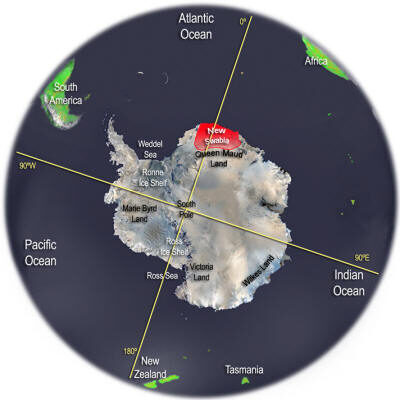

"The information in this documentary seemed to indicate that the Germans built their first operational disk sometime in the early 1940's in the first production facility in Prague.
"Then they proceeded to expand their design, development and research teams until by the time the Germans were being driven back into Germany, they had nine research facilities, all with projects under testing.
"They successfully evacuated eight of those facilities out of Germany, along with the scientists and the key people. The ninth facility was blown up. Now, this 16mm film showed some pictures of flying vehicles in operation.
"We also knew through intelligence, where I was working at the end of the war, that the Germans built eight very large cargo submarines, especially built, and they were all commissioned, launched and proceeded to disappear without a trace. To this day, we have no idea where they went.
"They are not on the bottom of the ocean or at any port we know of. It is a mystery, but the mystery might have been solved by this Australian documentary film, which shows large German cargo submarines in the Antarctic with ice flows all around them, and crews standing on deck waiting for tie-up at a quay.
We have underground information that some of the research facilities in Germany were taken to a place called "New Schwabenland
"Now, Germany was called 'Schwabenland' before it was called Germany. So, we are talking about 'New Germany', and it is located in an area at the South Pole formerly called Queen Maude Land".
Back around 1937, an international conference was convened under the League of Nations at the time to decide to restrict new claims to land in Antarctica.
At the time, everyone seemed to have a claim except Germany, who had not staked out a claim but only had some research going on down there.
The whole thing was designed to keep Germany from making a land claim as the Nazi's were coming to power. The German claims, which were shown on German maps, were refused to be recognized.
A couple of years ago, "National Geographic" showed the German claim on a map for the first time.
In 1939, Hermann Göring financed an expedition to the Antarctic, including a submarine force, and they took construction and digging equipment down there and began excavating a tunnel complex, and this activity might have been going on since that time. If that is the case, it could be a sizable complex today.
That may be where the big cargo submarines are.
"We believe that at least one or more of the disk research facilities were taken to Antarctica.
"We had information that one was taken to the Amazon, and that another was taken to the north coast of Norway, where there is a strong German population. Those were taken into secretly maintained underground facilities.
"Before World War II, the Germans had military advisors all over South America, and when we got into the war we persuaded countries in South America to give up German advisors and accept American ones.
"Down there, they still prefer the Germans and have never liked us. It is quite possible that some of this material and some of these research facilities were de-centralized to South America as the German empire began to collapse.
"The big companies like I.G. Farben and the German subsidiary of General Electric opened large subsidiary plants in Rio and Sao Paulo in Brazil, and some of these new facilities became larger that they had been in Germany. So, there would have been support capability for disk research facilities. One has to wonder how much truth there really is to all of this".
It appears that some of the crafts being seen today are nothing more than further developments of German disk technology. So, we may in fact be visited periodically by Germans.
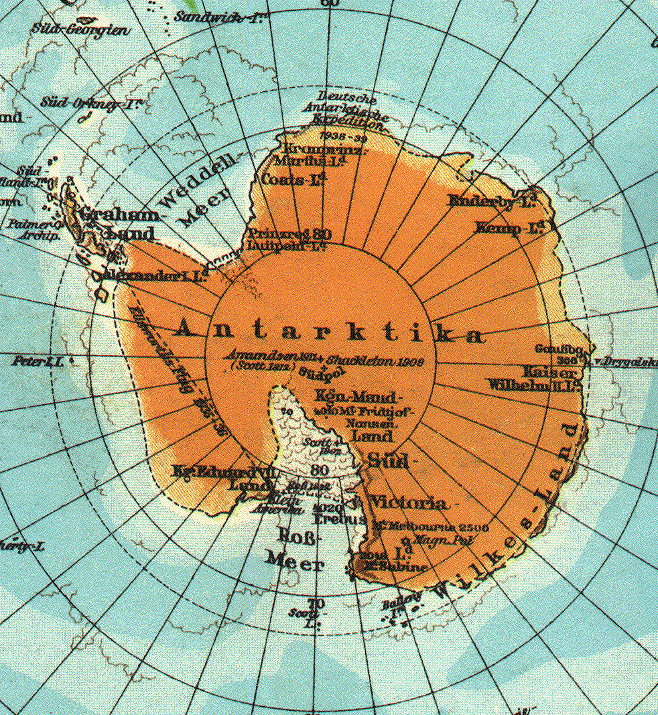
One has to wonder how much being observed is man-made, and how much is truly extraterrestrial technology. Certainly there is some of both, but no one knows what the percentages are".
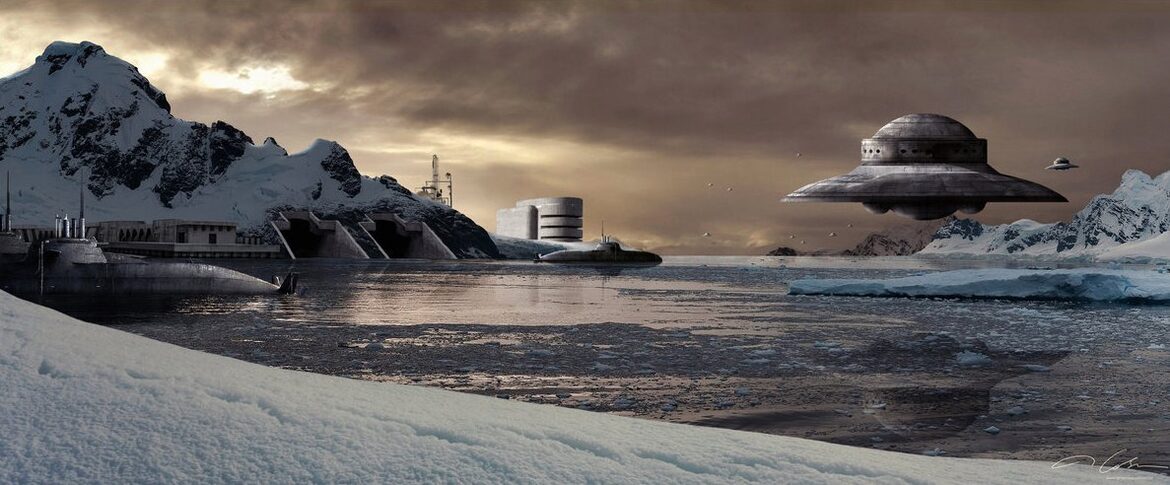
THE UNITED STATES NAVY ANTARCTIC DEVELOPMENTS PROJECT 1946-1947
RADM Richard E. Byrd [USN Ret.] - Officer in Charge TASK FORCE 68
RADM Richard H. Cruzen, USN, Commander TASK FORCE 68
As sadness permeated the American naval bases, at the decommissioning of ships, Admiral D. C. Ramsey, chief of naval operations, was in Washington signing his name to an astounding set of orders addressed to commanders in chief of the Atlantic and Pacific Fleets. These orders would establish the Antarctic Developments Project which would be carried out during the forthcoming Antarctic summer [December 1946 - March 1947]. Chief of naval operations, Chester W. Nimitz, code named the project Operation Highjump.
Instructions were for twelve ships and several thousand men to make their way to the Antarctic rim to (1) train personnel and test material in the frigid zones; (2) consolidate and extend American sovereignty over the largest practical area of the Antarctic continent; (3) determine the feasibility of establishing and maintaining bases in the Antarctic and to investigate possible base sites; (4) develop techniques for establishing and maintaining air bases on the ice, with particular attention to the later applicability of such techniques to operations in interior Greenland, where, it was claimed, physical and climatic conditions resembled those in Antarctica, and (5) amplify existing knowledge of hydrographic, geographic, geological, meteorological and electromagnetic conditions in the area.
1) Although not specifically stated in the 26 August 1946 orders, a central objective of the project was the aerial mapping of as much of Antarctica as possible, particularly the coastline...
2) Also in January 1947, famous aviator Eddie Rickenbacker was pushing for American exploration in Antarctica, including the use of atomic bombs for mineral research.
3) November headlines in the "New York Times" declared a six nation race to Antarctica "set off by reports of uranium deposits". The article went on to charge that the British was leading the race by sending a "secret expedition" to occupy Byrd's 1939-41 "East Base" at Marguerite Bay on the Antarctic peninsula. Actually, the British had been active in Antarctica for a number of years.
4) The formal American position on the polar regions had always been that they should be open to exploration and research by all concerned but in the wake of Admiral Byrd's formal announcement of Operation Highjump on 12 November 1946, Latin American governments became nervous and suspicious of the notorious American Yankee.
Operation Highjump was seen as a huge threat to future Latin American claims. After all, thirteen ships with 4,700 men seemed to confirm the notion that the United States had a plan of their own to seize huge chunks of the continent. The official press release by Byrd seemed to confirm their anxiety as Operation Highjump was justified as an "extension" of the United States Navy's "policy of developing the ability of naval forces to operate under any and all climatic conditions". A publicly stated objective was to "consolidate and develop the results of the "US ANTARCTIC SERVICE EXPEDITION 1939-41". As it turns out, the Latin suspicions were correct. Initial approval of Operation Highjump was apparently reached at a meeting of the "Committee of Three" [Secretary of State, Secretary of War and Secretary of the Navy] on 7 August 1946.
5) Admiral Marc Mitscher, commander in chief of the Atlantic Fleet, was even more daring in his "Instructions for Operation Highjump" issued on 15 October. "Objectives" included "Consolidating and extending United States sovereignty over the largest practicable area of the Antarctic continent".
Perhaps the Departments of State and Navy had wished for major territorial claims, but the fact of the matter is that no formal claims were made by the men of Operation Highjump. It was not launched in a scramble for Antarctica's natural resources nor was it launched for the chief purpose of territorial expansion. According to news releases of Admiral Byrd's 12 November press conference announcing Operation Highjump, "The Navy strongly discounted reports that the voyage will be primarily a lap in the race for Uranium.
'When this expedition was first talked about, Uranium wasn't even mentioned. The statement that this is a Uranium race for atomic energy is not correct', Admiral Byrd was quoted as saying. However, the basic objectives were not diplomatic, scientific or economic - they were military. Operation Highjump was, and to this day still is, the largest Antarctic expedition ever organized.
6) Admiral Ramsey's preliminary orders of 26 August 1946, stated that "The Chief of Naval Operations only will deal with other governmental agencies" pertaining to 'Operation Highjump'.
"No diplomatic negotiations are required. No foreign observers will be accepted".
Thus, it seemed there would be little room for civilian scientists and observers.
Operation High Jump, to this day the largest expedition ever in Antarctica, was led by the renowned polar explorer, Rear Admiral Richard E. Byrd. Conspiracy theorists specializing in alleged Aryan or Nazi activities in Antarctica have extensively speculated about this mission
On Saturday 8 July 1939 Americans across the country opened their morning newspaper to a front-page story not unlike the one from "The New York Times" quoted below.
President Directs Speed on Byrd Trip
[Excerpts]
WASHINGTON, 7 July: President Roosevelt moved today to prevent possible extension of Germany’s claims to Antarctic areas into the Western Hemisphere by directing Real Admiral Richard E. Byrd to leave in October to territory within the sphere of influence of the Monroe Doctrine … it [is] apparent that this government was prepared to take the position, if necessary, that any attempts by foreign powers to establish bases west of the 180th meridian in the Antarctic would be considered an unfriendly act …
If the $340,000 appropriated by Congress for the expedition permitted, Admiral Byrd said, he would outfit three ships. His own ship would be The Bear of Oakland, which is undergoing a careful inspection at Boston. He said he would lend it to the government after a new engine had been installed…
As can be seen from the above a major confrontation between American and German forces seemed to be a very real and present danger in Antarctica in 1939. However, in retrospect, though the German presence in the “land of everlasting mystery” was the publicized reason for Admiral Byrd’s hurry-up expedition, at no time did Admiral Byrd or those under his command make any attempt to observe what the German expedition was up to.
Neither in the 1938 - 39 nor the subsequent 1947 and 1955 expeditions to Antarctica did the Americans come anywhere close to the lands claimed by the Germans.
Could the stated reason for the 1939 expedition, as is often the case in military operations, be only a cover for a more “important” secret mission for Admiral Byrd and his fellow members of the 1939 expedition.
The following small article hidden away on a back page of the 30 November 1939 issue of "The New York Times" highlights that possibility.
Secret Orders Taken by Byrd on Polar Trip
[Excerpts]
WASHINGTON, 29 November [AP]: Rear Admiral Richard E. Byrd joined the vanguard of his South Pole expedition at the Panama Canal today with confidential orders from the White House. Officials say the Orders were a State Department secret … Even the existence of the orders, authorities said, had been kept secret … Admiral Byrd received them, informants say, on a hurried trip to Washington last week before departing for Panama.
Is it possible that these “secret orders” contained the real reason for Admiral Byrd’s expedition?
And was the fact that the Germans were also conducting a "secret" expedition in Antarctica make the Admiral’s real reason for putting together the American expedition a matter of up-most importance? Could both expeditions have been carrying secret orders to explore unknown “lands beyond the pole?” Were the Americans and Germans involved, in 1939, in a race to be the first to gain entrance, and explore the legendary lands inside our earth?
A race not unlike the ‘space race’ between America and Russia several decades later.
In 1946, US Navy Secretary James Vincent Forrestal assembled a huge amphibious naval force for an Antarctic Expedition expected to last six to eight months. Besides the flagship 'Mount Olympus. and the aircraft carrier 'Philippine Sea\, there were thirteen US Navy support ships, six helicopters, six flying boats, two seaplane tenders and fifteen other aircraft. The total number of personnel involved was over 4,000. and consisted of 13 ships, 23 aircraft and 4,700 men.
According to a 1946 Navy memorandum, the mission's goal was "consolidating and extending U.S. sovereignty over Antarctic areas, investigating possible base sites and extending scientific knowledge in genera"..'
With the Cold War turning more frigid by the month, the venture unnerved the Soviet Union. The Soviet whaling fleet had just begun plying Antarctic waters, and a military publication called "Red Fleet" warned darkly that the operation was proof 'American military circles are seeking to subject the polar regions to their control.'
Argentina and Chile were none too happy, either. Both countries had their own overlapping claims to areas extending from the tip of South America. Their fears of an American incursion were heightened when Chile asked Washington's permission to send an observer along, but was turned down.
The expedition was terminated abruptly at the end of February 1947, six months early, the entire remaining armada returning immediately to the United States. A number of mysterious incidents occurred involving aircraft, but the early termination of the mission was never explained.
A report in the Chilean newspaper "El Mercurio" of Santiago on 5 March 1947 sheds some possible light on the strategic importance of polar reconnaissance. The article by Lee van Atta entitled 'Admiral Richard E Byrd refers to the Strategic Importance of the Poles" had been sent from "On Board Mount Olympus on the High Seas". No other newspaper appears to have carried the report.
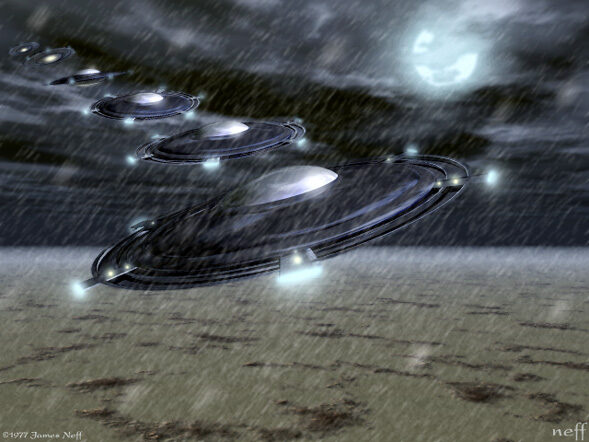
The bizarre article opens:
"Admiral Byrd declared today that it was imperative for the United States to initiate defence measures against the possible invasion of the country by hostile aircraft coming from the polar regions. The Admiral stated, 'I don't want to frighten anyone unduly but it is a bitter reality that in the case of a new war the continental United States will be attacked by aircraft flying in from one or both poles'.
The use of the future tense "will be attacked" instead of "may be", or "could be" or even "is likely to be" is odd, since he was usually very precise in his use of terminology, and suggests a threat. "El Mercurio" is a conservative Chilean newspaper with editions in Valparaiso and Santiago
.
In their books, written in the 1970s, Wilhelm Landig and "outcast Ufologist" Ernst Zündel claimed that Operation High Jump was literally "the Last Battle of World War II".
In "Secret Nazi Polar Expeditions" [1978] and "Hitler at the South Pole" [1979], Zündel claimed that Reichsführer-SS Heinrich Himmler had founded an SS colony in Antarctica called Neuschwabenland. The base, known as Point 211, eventually became the Antarctic Reich.
Opinion is sharply divided about the final fate of Neuschwabenland. Some argue that the Nazis abandoned their Antarctic sanctuary in the 1960s and moved to sites in the Andes.
Another group claims that the Antarctic Reich still exists and has grown into "a civilization under the ice," home to about 3 million people of German and Ukrainian descent. It's supposed to be somewhere in the Mühlig-Hoffman Mountains, adjacent to the ruins of Kadath, a city founded by settlers from the lost continent of Atlantis.
Neuberlin
If you had been a Wehrmacht soldier at the bombed-out railroad station in Poltava, a city in the Ukraine, during the summer of 1942, you may have seen a very strange-looking military unit on the march, heading for a waiting passenger train.
The unit consisted of women, all of them blond and blue-eyed, between the ages of 17 and 24, tall and slender, their sensational figures encased in striking sky-blue uniforms.
Each woman wore an Italian-style garrison cap, an A-line skirt with the hem below the knee, and a form-fitting jacket with the insignia of the SS. You might have thought the SS had recruited a platoon of high-class call girls, but the truth was far stranger than that. You would have been looking at Reichsführer-SS Heinrich Himmler's latest brainstorm - the 'Antarktische Siedlungnsfrauen' [Antarctic Settlement Women or ASF].
The story actually begins in 1938, when the German seaplane carrier 'Schwabenland' sailed across the South Atlantic, bound for Queen Maud's Land in Antarctica.
According to Russian Ufologist Konstantin Ivanenko:
"The Schwabenland sailed to Antarctica, commanded by Albert Richter, a veteran of cold-weather operations. The Richter expedition's scientists used their large Dornier seaplanes to explore the polar wastes, emulating Admiral Richard E. Byrd's efforts a decade earlier.
"The German scientists discovered ice-free lakes [heated by underground volcanic features] and were able to land on them. It is widely believed that the Schwabenland's expedition was aimed at scouting out a secret base of operations."
A German base was established in the Mühlig-Hofmann Mountains, just inland from the Princess Astrid Coast. The area was renamed Neuschwabenland [New Swabia] and "the base was known only as Station 211".
From the movie "Schindler's List", people have gotten the idea that killing Jews was the Nazis' main concern. But in actual fact, Hitler and the SS were just as ruthless with the rest of the population in their eastern European empire, thinking nothing of shuffling large numbers of people around in their quest for a more perfect Aryan race.
This shuffle was accomplished by a little-known office of the SS called the Rasse und Siedlungshauptamt [German for Race and Settlement Bureau] or RuSHA. In the Ukraine alone, RuSHA drafted 500,000 women for forced labor in the munitions factories of Nazi Germany.
It was RuSHA which selected women for Himmler's unit of Antarktische Siedlungsfrauen [Antarctic Settlement Women] About half of the "recruits" were Volksdeutsch-ethnic Germans whose ancestors had settled in the Ukraine in the Seventeenth and Eighteenth Centuries. The others were native Ukrainians whom RuSHA had 'upgraded' to full Aryans.
This process was called |'Eindeutschung" [Germanization].
According to Ivanenko, there is increased popularity for the idea of a "German-Slavonic Antarctic Reich". It is said that 10,000 of the "racially most pure" Ukrainians, out of half a million deported in 1942 by Martin Bormann, were transported to the German Antarctic bases during World War II, in the proportion of four Ukrainian women to one German man.
If true, this would mean that Himmler transferred 2,500 Waffen-SS soldiers, who had proven themselves in combat on the Russian front, to Station 211 - now Neuschwabenland - in Antarctica. This may be the source of the myth of the "Last SS Battalion".
An ASF training camp was set up in Estonia, on a peninsula near Ristna on Hiiumaa Island in the Baltic Sea. It was a combination finishing school and boot camp, where the ladies took lessons in charm and housekeeping along with their courses in polar survival. Himmler kept the camp's existence a closely-guarded secret. For "unhappy campers," the only escape consisted of a one-way train ticket to Auschwitz.
[There is one known instance of an ASF "deserter." In 1943, Auschwitz guard Irma Griese, 22, the off-and-on girl friend of Dr. Josef Mengele, took to wearing a sky-blue ASF uniform, which she had scavenged from a pile of inmate clothing. Griese was hanged in 1946 for war crimes. The uniform's original owner must have had serious second thoughts about a permanent move to Antarctica].
The failure of Großadmiral Karl Dönitz's U-Boat offensive by May 1943 freed up dozens of "milk cow" U-Boats. These were large submarines, almost as big as tramp steamers, which Dönitz had used to supply his U-Boat "wolf packs" in remote seas of the world. Himmler now put them to work carting supplies and personnel to Antarctica.
Himmler's rationale for sending thousands of settlers to Antarctica can only be understood within the context of his mystic beliefs. As a result of his youthful reading of New Age books, his association with the occultist Dr. Friedrich Wichtl, and his membership in the Artamen, Himmler became a believer in the Hindu concept of world-ages or yugas. He believed that the current age, or Kali Yuga, would end in a global cataclysm, thereby giving birth to a new world-age called the Satya Yuga.
By sending a Nazi colony to Antarctica, Himmler was ensuring that a remnant of the "pure Aryan race" would survive the coming cataclysm with its society and culture intact. They would then take possession of Antarctica when the cataclysm melted the south polar ice cap.
According to believers, the Neuschwabenland colony survived not only the end of World War II, but a full on battle with the 3,500 Marines and aircraft of Operation High Jump.
In 2003 Ivanenko wrote:
"The total population of Nazis in Antarctica now exceeds two million and that many of them have undergone plastic surgery in order to move about with greater ease through South America and conduct all manner of business transactions".
He called the Antarctic Reich, "one of the most militarily powerful states in the world because it can destroy the USA several times over with its submarine-based nuclear missiles, remaining itself invulnerable to U.S. nuclear strikes because of the two-mile-thick ice shield".
Further, he claims that the city of Neu Berlin, the colony's capital, sprawls through "narrow sub-glacial tunnels" under an unnamed mountain range, heated by "volcanic vents".
The Ufologist also makes the claim that Neu Berlin adjoins, "the prehistoric ruins of Kadath, which may have been built by settlers from the lost continent of Atlantis well over 100,000 years ago".
A claim floats around in modern U.F.O. lore that an extraterrestrial craft with anti-gravity propulsion crashed in the Schwarzwald in the summer 1936, and was recovered by the Nazis who back-engineered it, thus explaining their flying saucer program. This parallels stories of a similarly recovered crashed "saucer" near Roswell, New Mexico in 1947, the American back-engineering of which supposedly led to the discovery of the transistor [patented by Bell Laboratories the following year], fiber-optics and other exotic technologies.
Ivanenko reported that talk about the Antarctic Reich is "becoming more and more popular" in Russia, Poland, the Ukraine, Belarus and other countries in eastern Europe.
He writes, "In the 10 May 2003 issue of the [newspaper] "Frankfurter Allgemeine", Polish journalist A. Stagjuk criticized Poland's decision to send troops to Iraq to assist with the Allied occupation.
"At the end, he said, 'The next Polish government will sign a treaty with Antarctica and declare war on the USA'.
Ivanenko added that Stagjuk's words were broadcast on the shortwave radio station "Deutsche Welle" the same week.
Some analysts compared this sentence to famous code phrases which started wars in the Twentieth Century, such as 'Over all of Spain, the sky is cloudless' in 1936, and "Climb Mount Niitaka" in 1941.
["Climb Mount Niitaka" was the signal Admiral Yamamoto sent to Kido Butai, the Imperial Japanese Navy's fleet, to begin the attack on Pearl Harbor].
It is strange to think of a large population living under the ice of Antarctica, totally divorced from the "mainstream" world.
• So, is there a city under the ice inhabited by the grandchildren and great-grandchildren of the original SS settlers?
• Or is it just an urban legend stemming from the chaotic conditions that prevailed in Europe during World War II?
Some day we may know for certain.
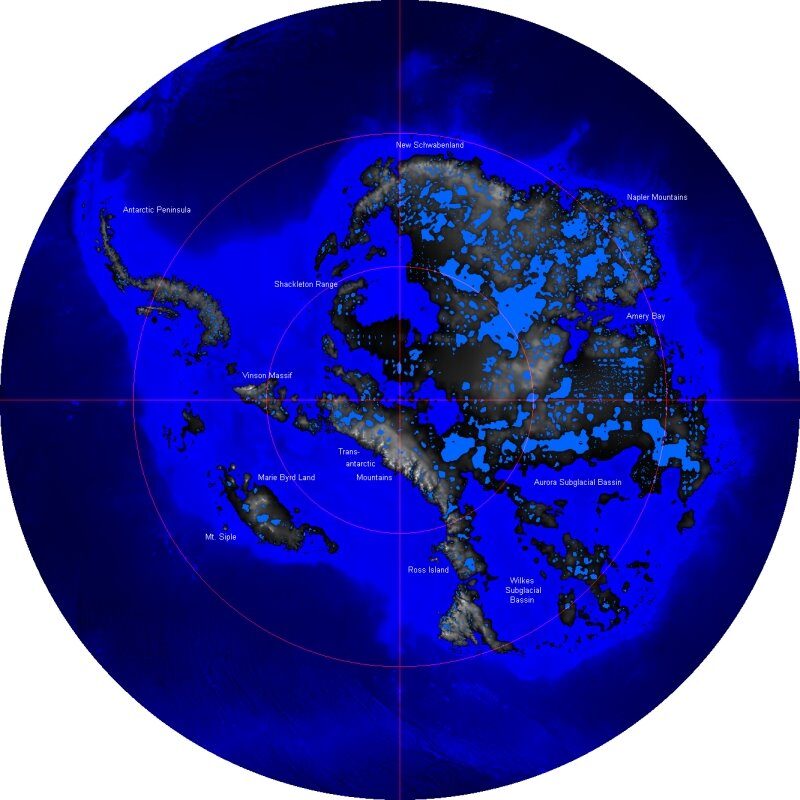
Antarctica is a continent, an enormous land area covered by ice
If its snowy cover disappears, what might this continent reveal? Easter Island-type statues? Stonehenge-type ruins? Lost civilizations?
This farthest southern land has long been a blank slate inviting speculation.
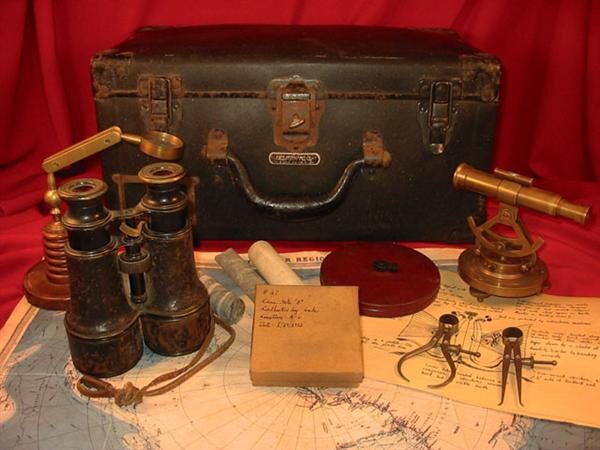
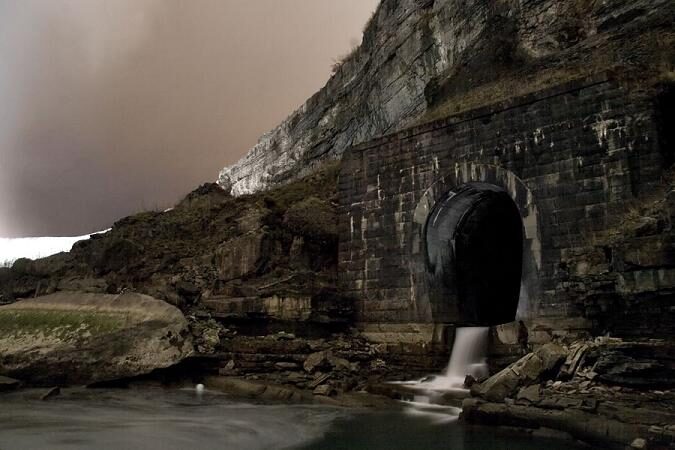
In the late 1830s a travel narrative appeared claiming to recount the "Adventures of Arthur Gordon Pym of Nantucket", a stowaway whose macabre misadventures had landed him on a tropical island in the Open Polar Sea of Antarctica.
Chased by cannibals and tormented by the weird cries of strange penguins, Pym made his way to the South Pole, where he was promptly sucked down a giant polar hole into.....
But here, to everyone's disappointment, the narrative broke off.
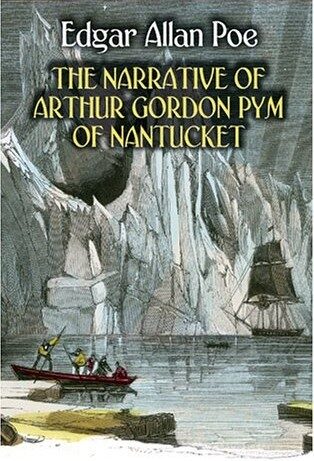
Notwithstanding the question of how a manuscript last seen accompanying its author to the center of the earth ended up in the hands of American publishers, some readers considered Pym's description of the Antarctic plausible enough to warrant a revision of world maps.
Although Pym is not one of Poe's most famous works, it proved popular enough to survive and inspire other SF authors.
H.P. Lovecraft wrote "At the Mountains of Madness" as a loose sequel to Pym, and his invention of Antarctic "Shoggoths" went a long way towards explaining why poor Arthur Gordon Pym was so terrified of penguins.
Building upon Poe's earlier work, H.P. Lovecraft told a fantastic tale in "At The Mountains Of Madness".
An Antarctic expedition finds a cyclopean lost city dating from before pre-Cambrian times.
Unearthed is evidence of a long-gone alien civilization, which had retreated to the polar region. Deep underground, a final discovery drives one of the explorers insane and they both narrowly escape with their lives.
With such accounts, it is uncertain where fact ends and fiction begins.
The essential guidebook to various intriguing literature regarding Antarctica is Joscelyn Goodwin's "Arktos: The Polr Myth" [1993].
As World War II drew to a close and defeat loomed, Hitler and the other leaders of the Third Reich, knowing that they were war criminals, must surely have looked into finding a bolt-hole.
Official history states that Hitler shot himself in his Bunker just before the Soviet troops arrived and his lieutenants and secretaries burned his body; but in actual fact the evidence for this is very thin and contradictory.
Did Hitler escape; and if so, where to?
Escape was perfectly possible.
The SS had many captured Allied aircraft in a hangar at their airbase very close to Berlin; they could have therefore flown Hitler in disguise over the Allied lines to a friendly harbour; then arrange for a submarine to meet them there and get Hitler out.
History says that this would be useless because the Allies had won the Battle of the Atlantic by then and that no U-Boat could operate there without being sunk.
But again, this is incorrect.
It is true that no U-Boat could carry out offensive operations in the Atlantic any more because the ships were too well defended, but that does not mean that a submarine trying to get somewhere secretly, could not.
In truth it could, easily.
Locating and sinking a sub which attacks you is one thing, trying to find a sub that does not want to be found is another matter entirely. It’s pretty much impossible in fact.
Germany also had the new Type XXI submarine with a Schorchel mast like a modern sub, so it wouldn’t even need to surface to recharge its battery and air supply, and it seems reasonable that this is the vessel Hitler would have chosen to make his escape.
But where could the world’s most wanted man hide?
All the Reich’s territories were being invaded and liberated. Where in the world did the Nazis have an outpost that was so remote, so isolated, in such an inaccessible place, that nobody would be able to reach it for many years? One place: New Swabia.
Information that has come to light from many sources, reveals that the Nazis had a large military infrastructure in their Antarctic enclave including a harbour, an air base and an underground port for submarines.

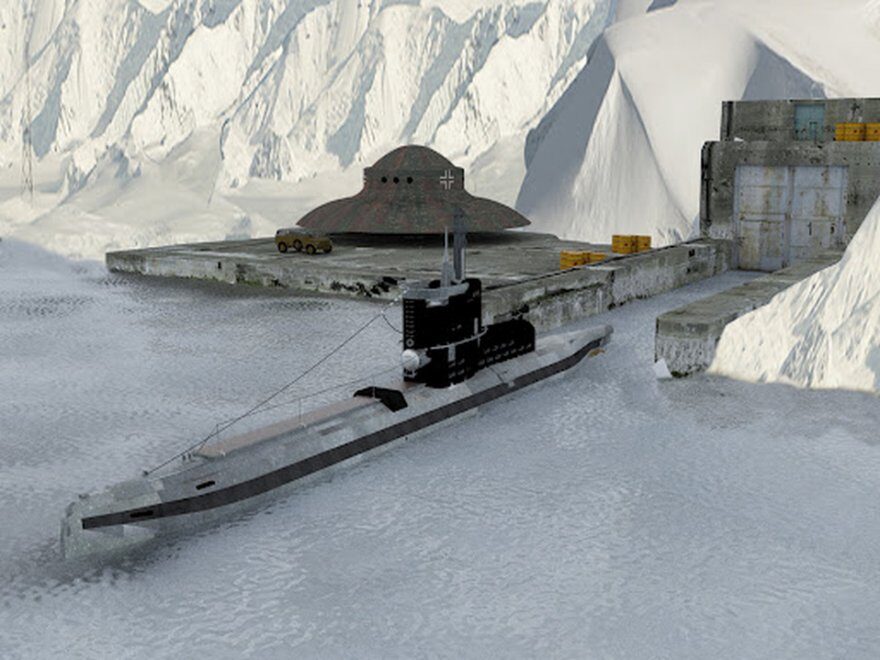
Some witnesses even claim that the Nazis were constructing their “New Berlin” in Antarctica where they planned to recover their strength and launch a new war in later years. In their hideaway the Nazis would be able to continue their research into esoteric vehicle propulsion and energy sources, as well as black magic and occult powers.
The war ended [officially] in 1945, but then less than a year later, a massive fleet of 13 ships [at least!] and 4700 sailors, soldiers and government scientists set sail for Antarctica;
This was many times the number of people who had ever visited Antarctica before and the mission, called "Operation Highjump", cost billions of dollars. The US government produced a documentary about it that was shown in cinemas all over the world called "The Secret Land". The four men [and less than totally proficient actors!] in the two opening office scenes are the Secretary of Defence Admiral James Forrestal, Admiral Chester Nimitz, Chief of Naval Operations during WWII, the famous polar explorer Admiral Richard Byrd and Admiral Richard Cruzan who commanded one of the secondary Highjump fleets.
Two of those four men, Forrestal and Byrd, were struck down by mental illness and suspicious premature death after the campaign was over.What are the odds of that?
When you watch this film be aware that you are watching an official United States government production, made on commission by a selected cast and crew with an approved script and production design. This was what the government wishes the public to think happened during Operation Highjump. They are portraying the project the way they want it to be perceived.
Did anyone ask some relevant questions?
- Why was a massive naval taskforce needed simply to set up a base and go prospecting for mineral deposits?
- Why couldn’t a small-scale exploration, of the kind that had been perfectly effective before, manage that?
- What good would minerals be because mining them and transporting them out in such a hostile environment would be totally uneconomic?
- If there are no dangerous bacteria and viruses in Antarctica then why did the Huskies need inoculating?
- Why go all the way to Antarctica for training, because if they wanted to train their forces in polar warfare then there are much closer and more accessible places to do it, even within the borders of the United States like Alaska?
-What really happened to Admiral Byrd during that incident when his plane went missing for three hours?
[The scene where Byrd and the other crew are trying to save the plane by jettisoning all non-essential equipment was not genuine live film of the incident, but a reconstruction shot afterwards in studio conditions for the movie].
Byrd was sectioned in a psychiatric hospital soon after Operation Highjump where he spent most of his remaining life. In 1949, Admiral Forrestal was also declared insane and supposedly committed suicide by jumping out of an upstairs window of a psychiatric ward. Even if there is such a thing as coincidence, could this really be one?
Operation Highjump’s true mission was very different from what official history tells us it was.
The taskforce was sent in, together with secret missions from Britain and possibly other former Allied nations for another reason altogether and the official story was smokescreen.
Their primary goal was to take out the Nazis in New Swabia and arrest or kill Hitler.
There is, also, the odd behavior of the Nazi submarine fleet in the final months of the war and just afterwards.
Boats were captured or surrendered in unusual locations carrying unusual cargoes, and sometimes their crews had unusual tales to tell. One boat was caught near Singapore trying to transit the Straits of Malacca. It was loaded up with a cargo of mercury. One wonders what the mercury was for until you read the strange stories that the Nazis had built a mercury-powered aircraft!
Also, how much did Rudolf Hess know about Antarctica? Hess surrendered himself to the British in 1941 after flying solo to the coast of Scotland demanding a parley with his friend the Duke of Hamilton; the two men had been exchanging letters for some time and Hess wanted to meet him face-to-face. His demand was rejected and Hess was imprisoned for the rest of his life. He died in 1987 - a claimed suicide.
During his long incarceration he was debriefed and interrogated thoroughly by British Intelligence and the minutes of that interrogation are all still Top Secret and are likely to remain so indefinitely. What did he tell people about New Swabia? What secrets did the Nazis who committed suicide [or escaped] take with them to their graves? Other Nazis too were captured and had their brains picked.
Admiral Karl Dönitz might be the key figure because he was both commander-in-chief of the submarine fleet and Hitler’s successor to the remainder of the Third Reich, giving him complete authority; the perfect combination to realize the escape plan.
After his trial at Nuremburg, Dönitz got off surprisingly lightly: a mere ten years in jail. The official story is that Admiral Chester Nimitz stood up for him because the Americans borrowed his "Wolfpack" submarine tactics to defeat Japan in the Pacific, but this doesn’t make sense; Dönitz didn’t give the US Navy the plans of his own free will! There had to be more.
Did Dönitz do a deal with his prosecutors? Information in exchange for leniency?

Translation:
Location of German Submarines'
[sideways tipped book cover with the title] "German Submarines 1906-66"]
On the left is a list of German subs and their date of commissioning, all in 1944.
On the right it states, in a long column
'Verbleib zur Zeit noch nicht geklärt' = Current location not yet explained
The partial text on this page deals with the Type XXI submarines that the Germans built at the Blohm and Voss shipyard during 1943/44 and commissioned during 1944.
There were some 50 [perhaps more] of these very advanced vessels built yet none were ever used in anti-shiping duties. None have any record of successes logged and yet they were in service from July 1944 onwards.
Officially they are logged as spending all of that time in "training exercises" – and this at the very height of the war when men and machinery were being transported across the Atlantic to supply the invasions of Europe by the Allies.
One has to ask the question why they were not used in the war effort and what did they actually spend their time doing.
If the Third Reich retreated to Antarctica then they certainly achieved this using submarines and what better than to use their advanced Type XXI subs for this effort.
With all of the men/women and machinery that would have required transportation, then it is very likely that the fleet of Type XXI’s were not on training missions but were going back and forth to Antarctica.
